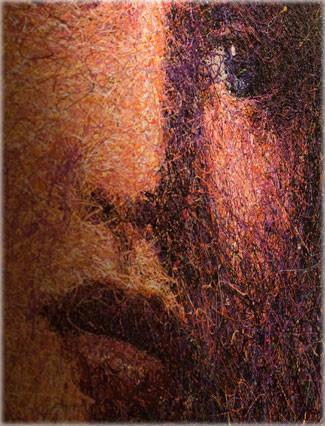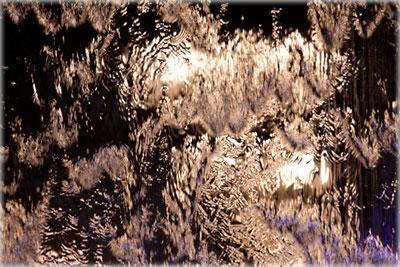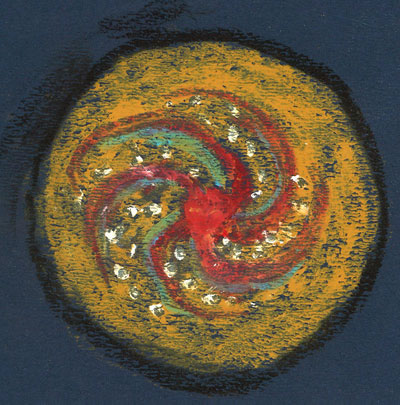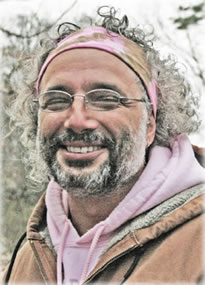Navigate Signs:
Recent Posts:
Archives
Featured links:
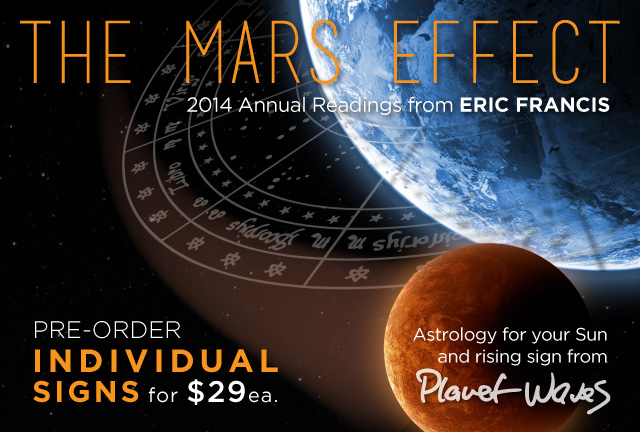
Monthly Archives: November 2012
Listening Between the Lines
By Joanna Watters
Can you imagine being in any close relationship in which the other person is never, ever allowed to interrupt? And can you further imagine that, should you both start talking at the same time, the unbreakable rule is that it’s the other who must give way, without hesitation and always in good grace? There is no question that this person will continue to give you their undivided attention — you know for a fact that their phone is already switched off and the door firmly locked to intruders. When you are ready, and only when you are ready, will they speak, not with the impatient agenda of foisting their own opinion when you pause for breath, but to guide you through the twists and turns of your own understanding. Every syllable they utter is a testament to the fact that not only have they been hanging on your every word, they’ve analyzed it as well. Little wonder that we fall in love with our therapists, but if you had such a relationship what would it feel like? I suggest the answer might be “unnerving”.
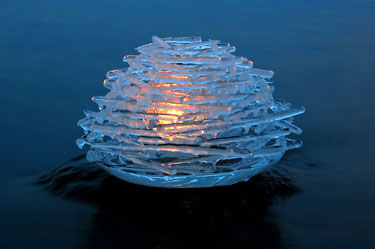
Art by Sally Smith.
Why? Because generally we do not invest this kind of effort into our day-to-day relationships. In truth, we probably don’t come anywhere close.
It’s recognized in the world of therapy that the desperate need to be understood — the primary need for someone to listen and to listen well — is at the root of widespread unhappiness. The unvarnished truth, sadly, is that to bask in such total attentiveness one has to pay for it. Like prostitution, the one-way street fills a genuine need but is artificial. It’s not “real life”. Furthermore, the experience is so intense that it has to be limited to the “therapeutic hour” of 50 minutes at a time. This is why client work can, if overdone, be exhausting — for the yawn-suppressing therapist.
As any working astrologer or therapist will acknowledge, the success of a consultation rests heavily on the act of effortful listening. Mercury, retreating through the mute dark waters of Scorpio as I write, reminds us that in this analytical process we are not listening just to what is actually said, we are also listening between the lines. Sometimes we are listening mostly to what is not being said, attempting to dredge up the precious silt from the teeming riverbed of the unconscious.
How Does the Astrologer Listen?
The worlds of therapy and astrology overlap, as a consultation is not just about the horoscope as an objective exercise. The coming together of astrologer, client and chart makes for a dynamic trio, pulling a reading into other realms and nearly always into the world of therapy. You will of course get the occasional genuine “I’m just interested” client, but they’re rare. This puts the astrologer in the rather tricky position of taking up the role of temporary therapist and, while the world of psychotherapy can manage very nicely thank you without any input from astrology, the same cannot be said the other way around.
Stay with me. This is where it gets interesting. One of the main things that distinguishes the astrologer from the therapist is the time factor. In therapy there are repeat appointments, usually over a very long period of time, during which the client will “unpack” their own personal issues at their own pace. With astrological work there may be a second or even third appointment, but there are many “one-off” consultations and the astrologer does not have the luxury of being able to return to a key point at a later date. However, the astrologer does have something that the therapist doesn’t — the horoscope.
The counseling astrologer has, therefore, to develop a highly specialized kind of listening. To grasp the astrological advantage of zooming in on a symbol as it comes into play we are not just listening to the client, we’re listening to the planets, too. We’re constantly converting the client’s words into another language, that of astrological symbolism. Much of this conversion goes on in the astrologer’s head and does not need to be spoken out loud in terms of explaining the actual astrology, a misguided attempt that only ever generates one mystified question, “What does that mean?” It pays not to lose sight of the fact that the majority of clients won’t even remember the sign of their Moon or Ascendant at a later date as it doesn’t have the same fascination or meaning for them as it does for the astrologer. They are less interested in the astrology than they are in what the astrologer has to say.
Breaking the Rules of Therapy
Only when the astrologer, client and horoscope come together can astrological information then be translated into meaning. It is the astrologer’s task to hold all the threads of informing, illustrating, interpreting, counseling and — oh yes — predicting, as the consultation unfolds. It’s also the astrologer’s job to keep the reading moving. If you’ve done any consulting no doubt you’ll have experienced the client who quickly shows every sign of settling in for the afternoon. This is in no small part due to the treat of a captive audience — someone to listen to them.
However, this begs the question: can you listen too deeply or for too long? Even with the best will in the world most people’s concentration will start to waver after listening to someone for more than 15 minutes. The astrologer, for the sake of uncovering the point of the reading and getting the message across in the allotted time must, perforce, know how to interrupt.
Conversely, I know that some astrologers like to start by doing most of the talking themselves but holding forth is a risky move, one that can alienate your client and block interaction. I personally prefer to get the conversation going as quickly as possible. The client always speaks their chart and, as long as you are fluent in astrological symbolism and able to locate their story in the horoscope, their words will always guide you to what is important.
In terms of how to interrupt, the important thing is not to talk over the client so that you both end up fighting for the same airspace. If you really are faced with a full flood of painful outpourings simple body language is often the best. Choose a suitable pause and stem the flow with a light touch on the arm, firm but kind eye contact, and a reminder as to why they are with you — for you to give them your findings. “Let me elaborate a little on how this is showing in your chart, because I think it might help you to make more sense of what’s going on, and for how long.” Often if I’m approaching the end of the reading I’ll say, “Well, we have another ten minutes, is there anything in particular you’d like me to recap or focus on?”
Being a careful interpreter – and interrupter – means that we must feel our way through each individual reading, picking up on what to translate and what not to, where we should expand and where we should abbreviate. All of this involves keeping your client engaged and listening to you, as much as they expect you to listen to them. Simple visuals of any kind will assist the effort of listening and understanding. I often sketch as I go along, such as simply drawing a circle with the horizontal line across it to show the Ascendant-Descendant when talking about relationships, or a planet on a dotted line to show a transit.
I also always work with some past transits or progressions first, rather than current or future. This establishes the client’s confidence in the astrology as well as in you as their astrologer, and there is no more effective way of capturing someone’s serious attention than demonstrating how their chart has already been accurate in terms of reflecting their individual life changes or events.
So, the ideal consultation is, in my view, a dialogue and not a monologue, and the listening/talking ratio is therefore different from the psychotherapist/client dynamic. In both, however, there is always a place for knowing when we should simply shut up and let the client talk. This can make a crucial difference to the success of a reading. Whether the conversation flows naturally, or whether the astrologer is constantly having to find ways to interject, the aim is to talk “with” the client and not “at”. It is a unique relationship that somehow exists in that twilight world between the therapist’s couch and the psychic’s crystal ball. Listen well — and the cosmos listens straight back.
About the author
Joanna Watters is a full-time practicing astrologer and tarot reader. She has practiced in London, Cairo and now in Greece on the island of Lefkada in the Ionian, where she has lived since May 1995. She started her own company in 2002, The Greek Island Summer School. She is the author of Tarot for Today and Astrology for Today. These books have now been translated into ten languages and are available in 14 different countries. You can find out more about Joanna on www.joannawatters.com
Posted in Featured Articles
Leave a comment
In Praise of Trees
This article originally appeared in the May 4, 2012 subscriber edition of Planet Waves. We are including it here as a fabulous astrology resource and as an example of the wonderful work we produce here at Planet Waves. If you are interested receiving weekly subscription mailings from us, visit this link to subscribe.
Dear Friend and Reader:
We’re approaching one of the most impressive Full Moons of the year — the Scorpio Full Moon, which this year happens Saturday, May 5 at 11:35 pm EDT. Presently the Sun is at the sensitive balancing point of the season, located halfway between (Northern Hemisphere) spring equinox and summer solstice. This time of year is known as Beltane, though in our particular year, the Moon comes along and makes an exact opposition to the Sun. What we get is a peak in the solar cycle (the seasons) coinciding with a solar-lunar cycle (the Full Moon), which is unusual and which carries a lot of momentum with it. It’s also a Full Moon at perigee — the closest point to the Earth, so visually it’s going to be a big one.
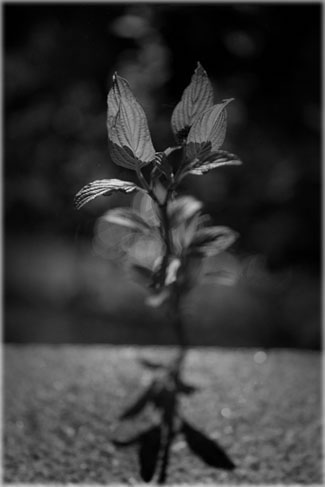
Flourish by Charlie Lemay.
Taurus and Scorpio are zodiac signs that specifically address the subject of resources, and the exchange of resources, whether you’re speaking of the planet itself, what humans exchange in commerce, through sex or in genetic material, and by extension, the economy that gathers around all of this activity.
We had a similar event on May 5, 2008, when there was a New Moon on Beltane, in the midst of a rather eventful year when we got a big reminder about our shared resources. At that time, there was something brewing that was quaintly referred to as the “subprime mortgage crisis.” A lot of banks, sucking cheap money out of the Federal Reserve Bank, had provided easy credit to many people who could not pay the mortgages back. The availability of cash was like throwing kerosene on the fire of American greed, and many people bought lavish homes though they could not afford them.
The lenders took millions of those bad mortgages, bundled them together and sold them as securities, that is to say, as “investments” made by other banks, companies and governments — but they were worth nothing. These entities were sitting on a cosmic-scale garbage dump of rotten paper — which meant that as a result, the entire economy was sitting on quicksand. Some institutions had half their total portfolio in these “products.”
This situation led to the bursting of the housing bubble — the absurd inflation of housing costs that seems to have been going on since the 1980s — followed by widespread liquidity problems that rippled throughout the global economy. The financial sector and indeed nearly every industry was reaping the benefits of its philosophy of globalism. We learned fast that what happened to one entity could affect any other entity.
The problems came to the surface undeniably on Wednesday, Sept. 10, 2008, when Lehman Brothers announced a third-quarter loss of nearly $5 billion (in one fiscal quarter). By that Sunday, Lehman had filed for Chapter 11 bankruptcy and what we now call the Great Recession was underway. Many banks were in crisis, over-leveraged and with no available cash to lend one another or anyone else. Trillions of dollars in bailouts, generated from debt charged to the citizens of the United States, were given to many financial institutions and AIG, one of the world’s largest insurance companies. This was the “financial 9-11” at the bitter end of the Cheney-Bush administration: the biggest bank robbery in history.

Ceremony by Charlie Lemay.
The astrological upshot is that there was a New Moon preceding this on May 5, 2008, with the Sun exactly at the midpoint of Taurus. I kept looking at that chart knowing it might be big, but I didn’t understand why. It seemed significant that there was a New Moon on Beltane, a holiday associated with honoring the only true material wealth, which is the abundance of the Earth.
Yet in the technical sense there’s something else significant about this point in the calendar. Events that occur with the Sun at the midpoint of any season create what is called an Aries Point effect, where there is often high-impact news of some kind that resonates on a deeply personal level with many people. The effect is not always instantaneous (though sometimes it is).
For background, the Aries Point is the first degree of Aries (the position of the Sun at the spring equinox), and by extension the first degrees of any of the cardinal signs (Cancer, Libra or Capricorn as well), which form a cross. Each time a new season begins, the Sun touches a point of the cross. These are called the quarter days, also known as equinoxes and solstices.
When you bisect those points, you land in the middle of the fixed signs (Taurus, Leo, Scorpio, Aquarius). Those are called the cross-quarter days. They are sensitive spots which can energize the Aries Point, and point to events with far-reaching effects. Notably, almost all holidays are concentrated around the quarter days or the cross-quarter days.
This is where we are now. On Saturday, the Sun arrives in the same position as it was in 2008, four years to the day later. But just as the Sun reaches the midpoint of the season, the Moon comes along and makes an opposition to it (the Scorpio Full Moon).
We are once again in an election year. And, once again the world is on the brink of what we might politely call a financial threshold, though this time the problem seems to be centered in Europe. Spain just had its bond rating downgraded two notches from A to BBB+, and the Netherlands is on the brink of losing its AAA rating. Yannis Palaiologos, an author at Prospect.org, writes that, “This would lead to a rise in the cost of borrowing not only for the country but also for the EFSF, Europe’s rescue fund, which depends on guarantees from the dwindling number of AAA-rated Eurozone members for its high credit rating.”

Something Fishy by Charlie Lemay.
On Sunday, France seems poised to elect a socialist president. This would mean someone in office who is not as friendly to German president Angela Merkel as Nicolas Sarkozy, the current president, has been. Sarkozy has in effect been allowing Germany to run the finances of Europe through the debt crisis.
On the same day there are parliamentary elections in Greece, expected to inject far-right and far-left influences into the political environment (some “sick puppies,” in the words of our Athens correspondent). This would break up the two-party system there and could alienate crisis-besieged Greece from the Eurozone.
Meanwhile in the United States, Republicans are campaigning on a platform of cuts to social programs, increased taxes on the poor and reductions in the size of the federal workforce, ostensibly to help the economy — but which are certain to have the opposite effect. They’re also waging war on women, immigrants and anyone whose sexual orientation differs from what they claim theirs to be. Given this, it’s really weird to hear predictions of a close race.
And, into this mix, we are adding the Full Moon right at the midpoint of the Sun’s transit through Taurus. This is of course influencing us in personal ways as well. Other astrology suggests that many people are making decisions about, or are in crisis over, their most intimate relationships. This has been brewing for a while, though much of what was swept under the rug is coming out, sometimes with passion, urgency and decisiveness.
Remember that we’re in the spring of 2012 — from here on out, the large-scale events increase in frequency, with the Uranus-Pluto square ever in the background, running high-voltage current through the Aries Point. We’re just weeks away from a series of eclipses and one month from the transit of Venus. Speaking of: Venus is an influence directly related to Taurus, to earthly resources, to wealth and to value. The transit of Venus on June 5 describes a kind of revaluation, or at the least a rather deep and sweeping re-evaluation.
Instead of using astrology to be predictive about these events (it’s tempting, and many will be tempted to be negative, basing their future predictions on what’s happened in the past) I think we need to be visionary. No matter what goes wrong on the planet, or what messed-up things people do, it’s people who solve the problems and people more connected to life who invent new ways of life. Eventually over time, there seems to be very slow progress. Yet we are now at a quantum point. The combined creative intentions of even a few people can be magnified by the rapidly rising energy — which brings me to trees.
The economy as we think of it is a study in exchange, but it seems to me that the real exchange on our planet involves trees. This is true in the biological sense of the word, and economic (most people live inside houses made from wood) though trees are sentient entities, many of them centuries (or millennia) old that ground profound information onto the planet.

Renewal by Charlie Lemay.
Despite its reputation for frisky erotic play among neo-Pagans, Beltane is really a tree holiday. That’s the theme that many related holidays around the world at this time of year share — a celebration of trees. “This is Spring Growth Mother Earth Green Day,” says Donna Henes, author of Celestially Auspicious Occasions, who was my guest this week on Planet Waves FM.
“The spring cross-quarter day is all about growth. Spring equinox is about birth, and the mid-spring cross quarter day is about the exuberant, vibrant, hormonal kind of growth. That’s the link between the tree and the sexual frenzy that we associate with the May Pole. It’s a celebration of the new green, the growth of life, of life on Earth and Mother Earth, the Creatrix. The tree is a universal symbol of life, from Buddha being born, receiving enlightenment and dying under the tree, and on and on.”
The tree is celebrated as an entity that reaches deep into the ground and at the same time reaches to the heavens. It is a bridge between Heaven and Earth, with its growth nourished both by the light of a star (the Sun) and the solid mass of the planet where it has its roots.
In Pagan times, this was celebrated many ways, including with the May Pole dance. The pole is of course made from the trunk of a tree that is draped in garlands, to which are attached long ribbons. The dance involves everyone holding one of the ribbons and then weaving the web of life, circling the pole in an obvious celebration of the phallus. But there’s a lot more going on as well.
The Catholics adopted the May Pole celebration into Holy Cross Day, celebrated May 3, a Catholic version where they turn the tree into a cross (the Catholics have versions of all the Pagan holidays), which is a bigger deal in South America. “Throughout Latin America, they celebrate it as Cruzelacu, in midspring, which is a nature appreciation holiday. A cross is decorated as the May Pole would be, with ribbons and flowers, and sometimes flags, jewelry and dresses,” said Henes.
In the 1640s, there was an act of the British Parliament banning the May Pole. The law assailed the “heathenish, vanity, generally abused to superstition and wickedness” of the dance. The Restoration brought back May Poles, and there was a huge one erected in The Strand in 1661, which required the strength of 12 soldiers under the personal supervision of King James II. This was a 134-foot cedar pole. Then in 1717, it was moved to Wanstead Park in Essex, where it became part of the support of Sir Isaac Newton’s telescope.

Pas de Deux by Charlie Lemay.
“It was still serving the original symbolism of the tree, which is rooted in the ground and reaching into the heavens,” said Henes.
In contemporary Brazil, May Day is celebrated by designating a particularly powerful tree and decorating it with white flags.
The Liberty tree is a common symbol for several North American tribes. In the late 1800s a movement began to unite the tribes and present a common front to expel the white man. They created a ritual called the Ghost Dance where they circled around what they called the World Tree.
There’s also a Jewish holiday called Tu B’Shvat, which celebrates the birthday of the trees. In contemporary times, funds are raised and trees are purchased and planted. It’s a national tree-planting holiday in Israel, which has a national obsession with re-planting the desert.
On the other side of the world, there is a Chinese festival called Ching Ming, or the Bright and Clear Festival, where graves are cleaned and trees are planted near the resting places of the ancestors.
Finally, there’s a worldwide holiday that you hardly hear about any more called Arbor Day. On the first Arbor Day, held in Nebraska on April 10, 1872, an estimated one million trees were planted.
That’s a good thing — trees do nothing but support life on Earth. They are integral to the biosphere. Without them, life on Earth would not only collapse — we would all be a lot dumber than we already are. Researching the biological themes, I spent some time on the North Carolina State University website yesterday and this is some of what I learned.
One large tree can provide a supply of oxygen for two people. At the same time, a tree can absorb as much as 48 pounds of carbon dioxide per year, and can sequester one ton of carbon dioxide by the time it reaches 40 years old.
Forests supply over 50% of freshwater flow in the lower 48 states. According to USDA Forest Service estimates, some 180 million people — more than half of the United States’ population — depend on forests for their drinking water.

Wall by Charlie Lemay.
In addition to providing oxygen and water, trees keep the air breathable. Over one year, an acre of forest can consume the amount of carbon dioxide created by driving a car 26,000 miles, about twice the annual mileage for an average driver. An acre is pretty large. It’s a good thing that in the U.S., forests cover 749 million acres. That’s nearly 33% of the nation’s land. When the United States was first settled, they covered 46% of the nation’s total land area.
We would be in a symbiotic relationship with trees, were we not chopping them down so fast. Symbiotic means both parties to the equation benefit from the relationship — and trees do benefit from our presence and offer themselves to us for many purposes. At the moment, we seem to be getting most of the benefits of trees, but we also seem to be missing a larger point.
There’s a dimension to trees that some people have encountered and others have devoted their lives to. One such person is Elisa Novick, who you may have already encountered in a recent edition of Planet Waves FM. Elisa reminds me of an other-worldly cosmic entity that I might have met in a science fiction novel, except that she’s a real person working as a healer on the planet. Here is how she tells the story of her first meeting with a tree in a forest in upstate New York, not far from where I live.
“Walking down a mossy forest path, I was met by a powerful wave of love emanating from a magnificent oak. So began a fascinating multidimensional odyssey spanning 10 years, as a small patch of forest became my happiest place in the universe and a place for healing and awakening for many,” Elisa wrote in an email to me yesterday.
“Each tree has a unique personality and gifts to bestow. Trees hold keys for the survival and thriving of the Earth. They created the conditions for us to live on this planet and can do so again if we ally with them.

X Chromosome by Charlie Lemay.
“Learn to receive their healing love and converse with them and support them in their mission. Let’s not assume that if our ears can’t hear, that there is nothing spoken. Attunement is the next language of communication — with people, plants, animals, and the cosmos.
“My hope is that if more people understand that trees can be sentient and have healing and spiritual abilities beyond anything we have imagined, we will nourish those that are still alive and replant our bountiful forests. Not only the other half of our lungs, they may be the other half of our hearts.”
Elisa has the ability to communicate with entities that don’t use what we consider the normal senses. Here is what an oak tree in that forest said to her:
“In another world we were lovers, you and I, in dimensions too difficult to describe, but all things come around and we are brought together for a reason when it is correct and useful. Now this planet is dissolving in pollution and all are suffering to some extent. But there is always renewal available. You have renewed our context here on this planet by your thoughts and good wishes and we wish to stay now; though we have scouts foraging for another wilderness to ‘set up shop’.
“We are always prepared, as your Scouts say. Funny that you should mention contingency plans at your breakfast today. But in this spiritual realm, there are no contingency plans, no plans, just the unfolding of a reality that is long known, but never planned. How can I say that this is true? Or how to be fortunate enough to be enlightened/privy to this information? The known comes forth as it reveals itself out of the Great Plan, but it is never planned ahead of time; just revealed in its true glory, fully formed. Then it develops by choice, will, playful endeavor; curiosity; happiness. It is creativity in this making, Universal, powerful urges move through all, causing creativity to flourish in response, like leaves to the sun and wind forces. We move, too, we trees, as we are called by the greater plan, but have many choices and happiness rules the moment as to when and where we plop ourselves down and give of our happiness to the Earth or other spaces.”
A maple tree said:
“Many of your species have noticed that we (trees) are not doing as well as we used to; our leaves are dying from your poisons and our roots are also feeling the pinch. The water is no longer fully wholesome from soil or sky and we don’t like noise that is unnatural and vibrates our roots badly. But we continue to pour forth love and healing chemicals and go about our nature/natural lives in pursuit of a ‘higher ground’, a place wherein we become greater selves. Our development spiritually and consciously is all-important. As we develop, we develop new abilities and can bring forth great wonders energetically and also to the physical manifestation.
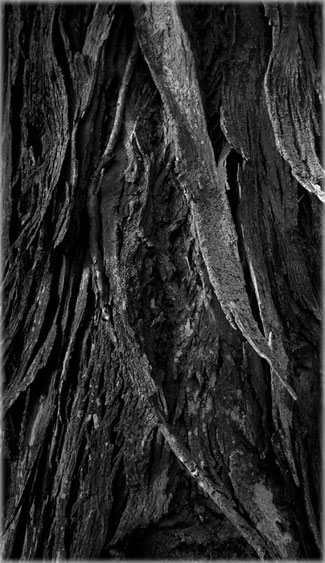
Revealed by Charlie Lemay.
“Call us forth. Please don’t deny yourselves this ability to call forth nature’s finest consciousness, its abilities to heal itself and the world. This garden planet is unique in its resources for higher consciousness and verdant growth possiblities. It provides great stamina and strength to its species and has an integration unlike any found. It can sustain great damage and heal itself, but it cannot sustain continued or even sporadic damaging; conscious and unconscious.
“So be well my friends. Come forth in your glory and you will find us waiting in glory to welcome you and live in harmony and grace (yes we know grace; we form it every day); we exude this natural grace. Solemnity is not part of that, but laughter, playfulness, ease and lightness of being; we are creative and naturally curious and we love the Christ consciousness coming through every pore of this planet’s existence. It is what the planet is made of after all. You must broaden your idea of what it is; your ideas are so narrow and limited. Widen and enlarge your awareness and you will find Me (Christ) in every cell of every plant and every stone and every being that exists, animal, dolphin, whale, etc.”
You can read more of these messages in this PDF that Elisa has prepared for Planet Waves readers.
The author Hermann Hesse seemed to be onto the inner life of trees as well. “Trees are sanctuaries,” he wrote in his book Wandering. “Whoever knows how to speak to them, whoever knows how to listen to them, can learn the truth. They do not preach learning and precepts, they preach undeterred by particulars, the ancient law of life.
“A tree says: A kernel is hidden in me, a spark, a thought. I am life from eternal life. The attempt and the risk that the eternal mother took with me is unique, unique the form and veins of my skin, unique the smallest play of leaves in my branches and the smallest scar on my bark. I was made to form and reveal the eternal in my smallest special detail. A tree says: My strength is trust…I trust that God is in me. I trust that my labour is holy. Out of this trust I live.”
Lovingly,
Posted in 2013 Resources Area
Leave a comment
Cue: Be One (or The Kuiper Belt Turns 20)
This article originally appeared in the August 31, 2012 subscriber edition of Planet Waves. We are including it here as a fabulous astrology resource and as an example of the wonderful work we produce here at Planet Waves. If you are interested receiving weekly subscription mailings from us, visit this link to subscribe.
Dear Friend and Reader:
Astrology is based on the premise that the shape of the solar system reflects the shape of consciousness. If that’s true, the edge of the solar system would represent a boundary or edge within the psyche, a place where familiar territory ends and the unfamiliar begins. Over the years, this boundary has moved gradually outward. For as far back as anyone was looking at the sky, the boundary was Saturn, the most distant visible planet. The edge moved outward with the first discovery of a planet — Uranus, in 1781, and with that discovery, the age of science and industry had officially begun.

Illustration of the Kuiper Belt by Don Dixon, which originally appeared in Scientific American in 2000. The outermost inner ring is the orbit of Neptune. The inclined orbit would be something like Pluto, though with a much longer orbit than Pluto actually has; in 2000 it would represent a possible discovery, though the shape and inclination are evocative of Eris. The Kuiper Belt is the cloud of small objects that surround the solar system. © by Don Dixon, all rights reserved.
Next came Neptune, which was finally observed to be a planet in 1846. Neptune for its part was a strange discovery — Galileo was the first to see it, way back in 1612, though neither he nor numerous astronomers who followed him actually understood what it was, even though they noticed it was moving. Such is the elusive nature of Neptune.
After its discovery in 1930, Pluto was the furthest known object orbiting the Sun. It was discovered by accident, when astronomers were busy looking for something much larger, something they’ve yet to find.
Over the years, different astronomers had theorized that there were swarms of small objects beyond Neptune, though by 1992, only Pluto had been found. Most astronomers accepted that it was the outer edge of the solar system. There didn’t seem to be a lot of interest in searching, either. There was no grant money available for the project; it was not as glamorous as studying the known planets. At that time, a lot of attention and resources were going into the Cassini mission to Jupiter and Saturn, as well as to Hubble space telescope projects that involved gazing out to the edge of the universe.
Jane X. Luu, then 29 years old, was doing postdoctoral work in astrophysics, collaborating with Prof. David Jewitt at the University of Hawaii’s observatory on Mauna Kea, Hawaii. They were researching small objects in our solar system, such as comets and asteroids. (One theory about this possible new region of space was that it served as a reservoir of comets.)
They had a question: why did space beyond Pluto seem so empty? In the true spirit of science — curiosity — they decided to look around.
“To us it was of scientific interest,” Luu recalled in an interview last week. “In terms of prestige, we had never wanted to study any planet. Grants are easy. Why study something that lots of other people study? We were going to do things that nobody else wanted to do.”
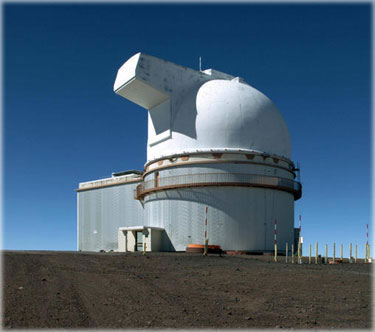
The 2.2-meter telescope at Mauna Kea, University of Hawaii, where 1992 QB1 and the Kuiper Belt were discovered by Drs. Jewitt and Luu. Photo from the University of Hawaii.
So, they spent their time peering off into the edge of the solar system, looking for anything that was moving. Mauna Kea is an ideal ground-based observatory because it’s sitting on top of a dormant volcanic mountain 4,200 meters above sea level, where the skies are often clear, and where there’s minimal light pollution or smog. Plus, it’s a smooth mountain, so there’s relatively little atmospheric turbulence — the bane of astronomers everywhere. They were using the University of Hawaii’s 2.2-meter telescope, a dependable old beast that had been in operation since 1970.
On the night of Sunday, Aug. 30, 1992, just before 11 pm local time, they pointed the telescope toward the southeastern skies and focused on a faint object. In fact it was so faint, it’s amazing they saw it against the backdrop of the stars. Over the next 90 minutes, watching on a monitor connected to a digital image captor, they noticed that the object was moving — which meant that it wasn’t a fixed star.
Jewitt and Luu had discovered the first-known object orbiting our Sun beyond Pluto. After 62 years of being the presumed edge of the solar system, Pluto’s reign was very quietly over. However, it would take a long time for the news to spread. The object they discovered was not especially large, and these particular astronomers are not media hounds.
The discovery was given the provisional designation 1992 QB1 — a technical reference that notes when it was discovered, and that it was the 27th object found in the second half of August of that year, nearly all of them asteroids of various kinds. (The second centaur planet, Pholus, had been discovered earlier that year, and the third, Nessus, would not be discovered till 1993. Centaurs are small planets located inside the orbit of Neptune.)
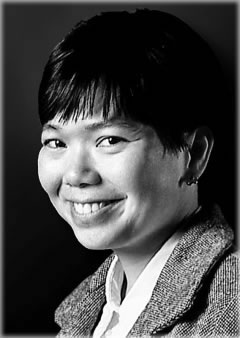
Dr. Jane X. Luu, astrophysicist and co-discoverer of the Kuiper Belt, now a senior scientist at the Massachusetts Institute of Technology. Official photo.
1992 QB1 has a nearly perfect circular orbit, which means it’s very stable. (The stability of its orbit is evidence that this region of space is not the origin of comets — they probably come from a region further away.) QB1’s orbit is nearly parallel to the solar equator, which takes it around the Sun in just over 289 years. That’s about 39 years longer than Pluto takes to orbit, though Pluto has a wildly elongated path, which meets the plane of the solar system on a steep angle.
Because it was beyond Pluto, 1992 QB1 was also the discovery of what became known as the Kuiper Belt, named (or misnamed) for Dutch astronomer Gerard Kuiper. QB1 was the observation that demonstrated that there are indeed objects beyond Pluto within our solar system. If there was one, there would be more. There are about 1,000 known today, and Jewitt has predicted that there are as many as 70,000 — probably a conservative estimate based on an actual calculation.
Imagine the Kuiper Belt as a plane extending into space, similar to a ring of Saturn, though surrounding the Sun, out beyond all the larger planets. The discovery represented a radical step in the understanding of the solar system, though its significance isn’t fully appreciated. Among astronomers, many other discoveries get more attention (Eris, for example). Studying these small bits of planetary matter give us a glimpse into the early history of the solar system.
Among astrologers, 1992 QB1 seems to get the least attention of any minor planet. This is in part because the minor planets are not a popular topic in astrology, and even among astrologers who specialize in the new discoveries, QB1 leaves most of them without a starting point because it doesn’t have a name. The names of newly discovered planets almost always come from the astronomers (who don’t generally ‘believe in’ astrology, or think about it much). Yet astrologers depend on these names to help them suss out the meaning a new planet might contain.
Jewitt and Luu had proposed the name Smiley, after the fictional character George Smiley in the spy novels of John le Carré. Smiley is a kind of anti-James Bond — a quiet, disciplined espionage agent rather than one always running around with his gun drawn. But the name had been used on a main-belt asteroid honoring Charles H. Smiley (1903-1977), who was chairman of astronomy at Brown University. Jewitt and Luu did not propose another name, and they have no plans to.
When other bodies were discovered with orbits similar to QB1, they started to become known as the cubewanos, a pun on Q-B-1-ohs. This is some insurance that 1992 QB1 will always be its name. Once its orbit was confirmed and it got a place in the Minor Planet Catalog, its proper name became (15760) 1992 QB1. This always reminds me of Asteroid B-612 from The Little Prince.

David Jewitt, co-discoverer of 1992 QB1 and the Kuiper Belt, now a professor at UCLA. Official photo.
Last week I asked Jane Luu if she would share some impressions about her now-famous discovery.
“A lot of people don’t like it, because it started all the trouble for Pluto,” she said. The discovery of QB1 led to many other astronomers looking for objects in the Kuiper Belt, and one of them — Eris, discovered in 2005 — led to Pluto being reclassified as a Kuiper Belt object. “They should think of it as a new frontier of our solar system. It’s just like exploration way back in the 1500s. It’s about mapping new worlds.”
I asked how they financed the project. “We did it by lying and stealing, the usual way things are done,” she said. “We didn’t get any money for it. We would get telescope time to do other projects, and we would use it to do this. We’re good astronomers; we publish a lot and we’re productive, so nobody could accuse us of wasting resources.”
The region of space that Jewitt and Luu discovered was named for Gerard Kuiper (1905-1973), who in his writings referenced the possibility of a swarm of objects in the outer solar system.
“Kuiper anti-predicted the Kuiper Belt,” Luu explained. “He said it would be gone by now. It’s near Pluto and he thought that Pluto was going to scatter everything away. It was all conjecture. He had no numbers to back up anything. He was just guessing.”
It seems ironic that someone who predicted that something would not exist got that thing named after him. “Most people would be happy,” Luu said. “He got something for nothing.”

Four original photographs that led to the discovery of 1992 QB1. The images show the object moving slowly westward through the sky, indicated by an arrow.
To correct this, it’s sometimes called the Edgeworth-Kuiper Belt (or in England, the Edgeworth Belt, though you rarely hear this), adding the name of Kenneth Edgeworth, an Irish astronomer, economist and engineer. In the 1940s, he proposed that there would be a disc of icy bodies beyond the orbit of Neptune. “Edgeworth was obscure,” Luu said, “but he did not anti-predict it, like Kuiper.”
Why wasn’t the Kuiper Belt discovered sooner? It took 62 years from the discovery of Pluto, during a phase of history with increasingly spectacular telescopes. “These things were always out there, but people didn’t look for them,” Luu said. “People are not good at finding things they don’t expect to see. What you look for you will find. But sometimes it takes a bit longer than you expect, if it exists.”
Now, many of the most interesting new discoveries are found in the Kuiper Belt. Some are more of the nature of Pluto (called plutinos, with orbits around 250 years) and many others are of the nature of QB1 (the cubewanos, or classical Kuiper objects, with orbits closer to 290 years or longer). Plutinos are named for underworld deities. One example is Orcus, named for an Etruscan [ancient Italian, pre-European] underworld god who predates Pluto. Cubewanos are named for deities associated with creation and resurrection (Quaoar, a Native American creator god, is an example). There are other categories, which are sorted by how many orbits the smaller planet makes compared to Neptune. For example, Plutinos orbit twice for every time Neptune orbits three times. There are other categories with other resonances to Neptune.
Whatever the math involved, David Jewitt and Jane Luu proved one thing: that space is not empty beyond Pluto; there’s something there. For astrologers, so invested in what these things mean symbolically, this is rich territory. Or it should be, anyway. Most people’s consciousness stops at Pluto, if it even gets there, which is a significant limit, given the level of fear involved. One irony is that many astrologers don’t believe in the minor planets. Yet the discovery of QB1 led directly to the reclassification of Pluto as a minor planet, complete with a minor planet catalog number — now known as (134340) Pluto.
Beyond Pluto — Beyond the Edge
I’ve been developing my own impressions of QB1 since 1998, when I was given an ephemeris by centaur specialist Robert von Heeren, who I met when I was living in Munich. He didn’t share any ideas about QB1, just a folder with a stack of printed pages that contained the ephemeris he had calculated himself. [You can see Tracy Delaney’s version here, on Serennu.com.]

Pluto, illustrated by John Smith in 1709. He is shown kidnapping Persephone. Pluto is usually depicted naked and wearing a crown or helmet; the helmet makes him invisible to those he’s about to take.
For me it was news enough that something existed outside the orbit of Pluto. So let’s start there, since it’s a reference point. Each time a planet is discovered beyond something that’s been the long-established edge of the solar system, we experience a paradigm shift, both in our understanding of the planets, and how they work astrologically. History turns a corner. There also seems to be an extension of the presumed limit on human potential.
Mythologically, Pluto is the Roman god of the underworld. His temples were rarely visited by anyone; he was not a popular figure. As the lord of death, he was portrayed as a kidnapper, who traveled under a cloak of invisibility, a power granted by his helmet.
Astrology usually associates Pluto with the topic of “death and transformation.” Many would consider this a polite statement. Everyone who has lived through a Pluto transit consciously knows that they can be challenging. Indeed, they can be devastating, though we become deeper, more soulful people. As minor planet specialist Martha Lang-Wescott has said, we often miss Pluto transits when they’re over.
In history, I associate Pluto with what I call the Death Works era. The mechanized, chemical-infused death orgy known as World War I preceded the discovery of Pluto by about 16 years, though once Pluto was discovered, things really got cooking. Hitler came to power just three years later and turned genocide into an industrial process. When he was done, Stalin took over and outdid him with the gulag system and many, many more murders.
The rest of the 20th century was pretty much one long war; just naming a few, there was Korea, Vietnam, Cambodia and then Pol Pot’s genocide; there was the “Cultural Revolution” in China (the wide-scale enforcement of orthodox communism); there was a long massacre in Central America and a simultaneous one in East Timor; there were the genocides in the Balkans, there was Bush War I, and an ongoing, seemingly endless war in Africa. The 21st century began with the Sept. 11 incident, which was used to propagate wars in Afghanistan and Iraq. As Noam Chomsky wrote in The Culture of Terrorism, the way to impress Congress is to show them how many people you’ve killed; then you get funding to kill some more.
I don’t blame Pluto for this, though I think that Pluto represented for many people a limit on their consciousness. The limit involved (and for many still involves) the idea that death is the ultimate power, and could be used to get anything, or to gain any advantage. In this toxic belief system, death is the end, it’s the scariest thing, and whoever wields it can feel like God, or at least a god (and not such a creative one) for a while. Death and all the anxiety around it are often substitutes for sex, for love and for a conscious, willing sense of transition. Pluto can represent obsessive forces, and one manifestation is an obsession with death.
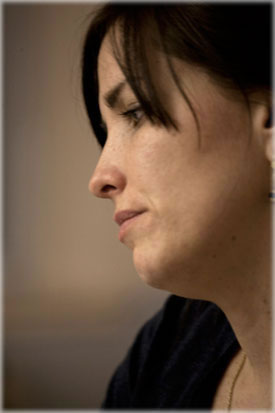
Annalee Orsulich is a doula, who assists both the midwife and the birthing mom in the birthing process. Though it’s being mechanized by medicine, in truth childbirth is an unpredictable experience every time it happens; some of a woman’s worst fears and inhibitions can come up during a birth, as well as her greatest strengths — and it takes someone special to hold space for that. Photo by Eric Francis.
Psychologically healthier people have a more functional relationship to change, and to growth, other themes that Pluto represents. Yet even for them, the shadow side of Pluto can be frightening, because it involves investigating the spaces in ourselves that we’re taught to deny, and to be terrified of. Then gradually we integrate the fear of change, and the changes themselves. Through this process we evolve; we can learn to center ourselves in soul consciousness. Yet most people go kicking and screaming.
There has to be a better way. Chiron, discovered in 1977, did a good job of beginning that conversation of a better way; it was the first planet ever discovered that became associated specifically with the healing process. Chiron is also associated with holistic consciousness. Chiron, the “inconvenient benefic,” is gentler than Pluto, and it’s more consciously associated with healing and transformation rather than death and transformation.
Power in the style of Chiron is what you gain from going through your challenges consciously, and what you gradually accumulate as you address your sense of wounding, and develop the power to heal yourself (and possibly assist others). The gradual development of Chiron as an astrological tool was a big step on the way to what 1992 QB1 represents, which is a conscious, preferably willing, process of change. Chiron has taught us a lot about Pluto, and I think 1992 QB1 will have a similar role.
Researching the earliest notes I have on 1992 QB1, I found this comment in an article called Worlds Beyond Neptune, published on Planet Waves in 2003: “QB1 may have associations with the Phoenix-like process of arising into new incarnations within our current lifetime, which often happens as a result of near-death experiences or with the experience of ‘ego death’.”
There’s a lot here about letting go of fear, which is part of every healing process. QB1 shows us that there’s something on the other side of what we’re afraid of, and of the fear itself. Our prior model of the solar system seemed to be saying that there was nothing on the other side of Pluto, of death; last stop, game over.
When Pluto later came to represent what some astrologers call evolutionary process, its reputation improved slightly, though it still seemed to stand for an involuntary imperative. As many have noted, one reason why Pluto transits can seem so scary is the feeling of not knowing what’s on the other side — or fearing that nothing is there.
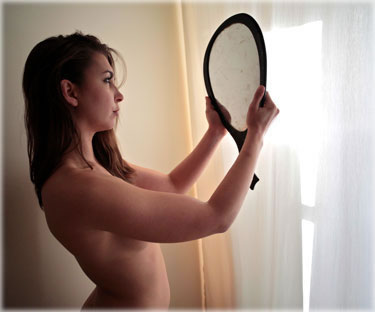
The opposite of kidnapping: self-knowledge. I associate 1992 QB1 with processes that acquaint people with themselves, so that we’re less susceptible to being taken over by others. One aspect of this is what I call “coupling,” or getting to know yourself in an unusually intimate way. Photo by Eric.
This new discovery whispered that there was more, and that it was worth letting go of the fear, and I think that QB1 shows a way of doing that. In the chart, think of it as pointing the way beyond your perceived limits about death, which remains a thought so terrifying to most people that they cannot even consider it. Now in the metaphor of the solar system, we have something in the model that says there is more; that there exists something beyond this perceived edge, which we can access if we want.
As I began to explore that idea, I began to understand QB1 as representing anyone who would help people move through processes where this kind of transformation or release was happening. I associated it with those who help people be reborn at the end of their lives — that is, an advanced kind of hospice work. There are some practitioners actually doing this now — though the work is controversial, because it defies the medical establishment, the hospice industry and the funerary industry.
Midwives as well seemed to be involved in the process of birthing new people, and taking women over the transition into a new phase of their lives, which is often like a form of reincarnation. Midwifery is a profound service, and a sacred trust. Midwives guide women through what is in truth a near-death experience, and if it goes well, a baby is born and the mother is reborn.
I was also familiar with the work of Betty Dodson, who developed what she calls orgasm coaching: consciously helping women learn to orgasm (something more necessary than you may think). I began to associate QB1 with certain kinds of sexworkers, the ones who understood that they were doing a service to humanity through their work. This came into focus during a reading for a client in Paris who had 1992 QB1 exactly in her ascendant, and who was designing an evolved form of prostitution with a focus on helping people liberate their sexuality. There’s a need in the world for well-trained sexual surrogates, who would help people past their inhibitions, phobias and fears — and there are people who very quietly do this for others.

Sex educator and orgasm coach Dr. Betty Dodson (second from left) teaching one of her bodysex classes, which she’s taught since the early 1970s. Betty is what I would consider a thresholder, someone who assists others in crossing inner boundaries and inhibition, facing the fear of their own sexuality. She has worked with tens of thousands of women and has produced books and videos that have reached millions. This image is from her new video.
What all of these had in common involved taking people over a threshold, so I started to associate 1992 QB1 with the thresholder. As I developed the idea in my fictional stories, the thresholder began to emerge as someone adept in all of these methods of healing and transformation.
Their actual role is to guide people into self-awareness, which is another way of saying into relationship with themselves. I call this process coupling. This is not about coupling with another person, but rather that of becoming acquainted with, and friends with, and lovers with, the inner alien with whom we live.
These ideas meshed elegantly with a subtle, egoless (nameless) planet orbiting silently outside the realm of Pluto, off to the edge of the solar system. Thresholders show us what’s beyond the edge, taking us into new territory and introducing us to the dimension that exists there. One day Dale O’Brien, familiar with my ideas, wrote to me and said the name is obvious. 1992 QB1 is your cue to be one.
It would make sense that 1992 QB1 was discovered on the first degree of the zodiac — the Aries Point. Aries is the sign of “I am,” though the Aries Point connects us to a collective reality. Indeed, 1992 QB1 relates to experiences, fears and inevitabilities that we all have in common. We all cross the threshold of the birthing process, then we do it over and over again. Many of us do it with help; assistance really is necessary here on Earth, with all its adversity.
If we look out at the current political landscape, it’s easy to see how this core, essential human material is harvested into a commodity, used against us, sold back to us or forced on us. This can only happen if we don’t take ownership of what’s within us; if we’re afraid to encounter the edge, and lack the faith that there’s something on the other side.
This is less likely to happen with those familiar with themselves, and who have taken the step toward meeting their inner stranger, that being who lives on the other side of a psychic boundary. You could say that QB1 represents the truth that there is life beyond the body, and beyond whatever you’re going through now.
Lovingly,
Posted in 2013 Resources Area
Leave a comment
The Folk Art of Therapy
This article originally appeared in the August 17, 2012 subscriber edition of Planet Waves. We are including it here as a fabulous astrology resource and as an example of the wonderful work we produce here at Planet Waves. If you are interested receiving weekly subscription mailings from us, visit this link to subscribe.
Dear Friend and Reader:
For a few years I’ve been wanting to write an article about how to pick a therapist. I know that there are those for whom opening up a real discussion about their lives is burning in their soul. Others know they’ve been dealing with the same problems over and over for years. You may see the same patterns repeating in your relationships, your career, your family life or other aspects of existence, and you decide that it’s time for that to change.
Helping people get into therapy has been one of the themes of my astrological practice. I believe in therapy and I think that in American society, so obsessed with denial and immaturity, it’s the one thing that nearly everyone needs, if they want to grow up and be not just functional adults, but also people who live fully.
Yet till now I haven’t felt comfortable writing the article. So in the interest of good therapy, I’ll start with my hesitancy.
First issue is that I’ve heard a lot of stories of unhelpful or even hurtful experiences. I’ve had a few myself. I’m aware that there’s a lack of trust looming around the whole issue of therapy. There is also a belief that it’s superficial.
Next issue is that when most people are choosing a therapist, they are in some kind of crisis, and that’s not necessarily the best time to be making such a critical decision. Yet it’s the time that it typically happens.
Another issue is that there exist a diversity of misunderstandings about what therapy is and how it works. For many people there is the perception that it’s supposed to be a magic or at least deeply mysterious solution. Images of the patient reclined on the couch in Dr. Freud’s office come to mind; he and he alone understands the workings of their unconscious — and the old man had a lot of problems (as do many contemporary therapists, who according to Alice Miller tend to come from abusive backgrounds).
Others treat therapy as if “going to talk to someone” is the ultimate admission of weakness — they are somehow not self-sufficient or intelligent enough to live their own lives. They want to go it alone. Lurking in the background here may be the idea that “I don’t want to go talk to someone because I’ll find out something I don’t want to know” or “they’re going to tell me I’m crazy.” (Often this translates to some form of, “I don’t want to deal with my problems.”)
Despite the existence of these reservations, I’m confident that good therapy is helpful and possible, though I am skeptical of how many people are actually qualified to do it. When I consider the diversity of innate and trained skills that it’s necessary to have, and the level of ethics required, and how bad the training can be, it doesn’t seem like there will be too many qualified candidates.
When I knew that I needed therapy in my late 20s, I set just one firm guideline for who I worked with — that the person would not have a Ph.D. Twenty years later, I don’t believe that a Ph.D. is an automatic disqualification; I’ve met some fantastic psychologists who have actually earned their doctorates, and who are truly helpful, wise and compassionate souls.
Yet I can see I was onto a significant distinction: I was looking for someone who practiced the folk art of therapy, rather than the institutional or academic kind. I’ll explain the difference in a moment, with a reminder that there are people who are part of both worlds.
My reference to someone named Joe Trusso came from a guy named John, who was having a torrid affair with my then-lover Sabine. One night I went to have dinner with the two of them, and after a while John suggested that I call up Joe and talk to him. John was an illustrious (even notorious) character. I think what I may have trusted the most was that John understood something about me, and his recommendation was an outgrowth of that. I had nothing to lose by going in for a session.
Now, you probably wouldn’t ask your partner’s lover for a reference to a therapist, or to anything for that matter. However, you might get the name of someone by some means that seems unusual. A synchronicity might be involved. In truth, references are a pretty good way to get started shopping around. Ask people you trust if they have heard of anyone, and ask what they heard.
The key fact is this: however you may be feeling, you’re going to need to make an informed decision, you’re going to need to trust that decision for a while (say, for three sessions, till you have a feeling for how things are going), and then you’ll need to evaluate how you did. Even an informed decision is a roll of the dice, however there are common-sense ways you can skew the odds in your favor, which could be applied to any selection process for a healer or practitioner.
If you don’t have a reference from a friend or another practitioner to work with, then open up the local community newspaper and see who is advertising. Pay attention to how you feel reading the ad and dialing the phone.
Is the person easy to reach? If you leave a message, do they call you back fairly soon? Do they answer your questions patiently? This is more than good business practice; therapists know that people often call them when in crisis, and they know that those first few minutes are a key time to cultivate trusting communication, and to offer a prospective client the chance to feel listened to and cared about.
When you pick someone you want to have a first meeting with, you might be inclined to tell them your whole story, which would be a good sign. But sometime during that first visit (or before), make sure you ask for a copy of their CV (curriculum vitae, a long-form resume that all professionals should have available). In my opinion, you’re looking for two things on their CV — the first of which are educational and professional experiences that qualify them for the service that they are currently offering.
Second, I suggest you look for diversity of interests. When I read Joe’s CV, it included therapy training in workshop format, educational experiences, teaching, educational consulting, plus some of his artistic and scientific endeavors. Among them was the fact that he’s a musical composer, with some of his notable performances listed. The topic of his master’s thesis was the magical powers associated with the shapes of musical instruments in indigenous cultures. This impressed me as intelligent and open-minded.
I think it’s far preferable to work with someone who is excited about life, and who challenges themselves to grow and explore existence. That’s the kind of example you want — and a therapist is very much an exemplar, not of a perfect person, but of an alive one. Such a person is more likely to relate to what you say and the unusual things you might want to do, and less likely to try to fit you into a box. The essence of therapy is to bring out the person you are inside, rather than have you be someone else.
Most people will want to know the person’s credentials — you know, they went to Cornell or Harvard and have the following licenses, and that would be enough. However, whatever their credentials, I suggest you go with your feelings. Do they take an active interest in you and your life? Can you feel their empathy? What does your intuition tell you? These things are FAR more important than how many merit badges they have.
Let’s make a distinction between the academic/institutional approach and the folk approach to therapy. To the extent that therapy exists these days, much of it takes the academic/institutional approach — coming with the need to make a diagnosis, for example. Psychologists and social workers have this cryptic thing called DSM-IV, which supposedly lists everything that can possibly go wrong with a person’s mind. As the patient, you would need to fit one of those categories; your diagnosis gets a little code, and that code is used to collect insurance (for example, social anxiety disorder is DSM-IV 300.23). Some people also find it comforting to know what’s ‘wrong’ with them, at least in the theory of a psychologist.
Many practitioners who use the diagnosis model will either prescribe mood-altering drugs, or refer you to someone who will. I find it stunning, shocking and unbelievable that so many millions of people you see on the street are taking ‘anti-depressants’. In my opinion, mood-altering prescription medications are only necessary in rare cases, not for everyday depression or anxiety. There is considerable evidence that they make matters worse. And they are prescribed without actual scientific data (for example, indicating exactly what ‘chemical imbalance’ is being treated). The purported goal of this kind of therapy is to cure the patient.
Alternately, the folk art of therapy has a more down-to-earth approach. The therapy room is a place of refuge or sanctuary. That’s how it should feel when you sit down there — like a place off to the side of existence, protected from the demands of the world, and a place where you want to come back. If after the first session you feel better about your life and you want to come back, that’s a good sign. Then see how you feel after the second session. If things go well for a month or so, give the person a chance and reassess in six months. Remember that there may be ups and downs in your attitude toward the work — but that’s not a given.
In this approach, the therapist is a witness and mentor. They maintain a loving presence, though one that’s not attached to your outcome. This is the crucial difference between a friend (or lover) and a therapist: someone you’re involved with personally may have a diversity of biases and attachments to you; your therapist will see you more objectively, and when you walk out the door you’re free to live your life — and come back — without worrying about their opinion of you.
One goal of this kind of therapy is accelerated maturation. It’s also about learning about yourself through an unusual kind of relationship that can become a model for other experiences. Your therapist should be the most supportive person in your life. This will teach you what a supportive person is.
There’s a deeper layer, though. I believe that ultimately, therapy is about the cultivation of trust. That is the thing learned; the missing experience had. This is saying a lot on a planet where trust is the rarest human element, and the thing most often abused when it’s found.
There is an idea going around that ‘talk therapy’ is superficial, and can only go so far, particularly compared to ‘energy work’. Without commenting on ‘energy work’, I will say this: trust is a core issue in life. Our cynical and self-judgmental attitudes are usually based on lack of trust, and this is almost always crippling.
The therapy relationship becomes the vehicle for that experience of learning trust, not in theory but in actual practice. That takes time, though it will proceed from a point of contact. That point of contact leads to the conscious observation that your trust in someone is growing, that it exists at all, or that some benefit will come from it. The relationship becomes an active demonstration that trust really is possible. One of the deepest learning experiences of therapy is looking for that trust in other relationships — and if you discover it’s not there, taking that fact to heart.
Trust leads to the ability to be vulnerable in a conscious and sincere way. Vulnerability without trust can have some catastrophic results. Most people struggle with trust and vulnerability. The therapy relationship becomes a place to experience those things that were largely missing, and to open up to the missing experiences, carrying what you learn over into other relationships. It’s pretty powerful contrast if you sit in your therapist’s office and have an intelligent conversation about your life, then you go home and feel like you cannot say a word to your parter about anything you talked about.
The best therapists have the flavor of part sage mentor and part peer. They become the authority in our lives which we aspire to be, and then get busy being. They can help supplant the negative or unsupportive influences of parents, whose authority we also aspired to, but who sometimes or often betrayed our trust. Your therapist must be someone who teaches you to respect and take care of yourself — by example, and through the relationship.
Your insurance, if you have any, may not pay for the person you find who takes this approach. That means you will have to pay for it yourself, something I’ve always thought was worth the expense even when I could barely afford food and rent. Therapy is the place you will begin to heal your pain, let go of the past and access your deepest potential. Once you find someone you’re willing to do that with, I suggest you not put a price on it. Do what you have to do to earn the money and write the check every week. You may discover that makes the experience all the more meaningful to you.
Lovingly,
PS: I have covered the topic of therapy a few times before. One is an article called A Visit With Joe. I also have an article called In Canada, They Call it Therapy, which describes an astrology process I use with Chiron. I give more details on that process in this article, called When Astrology Listens.
Posted in 2013 Resources Area
Leave a comment
Beyond Astrology
This article originally appeared in the May 18, 2012 subscriber edition of Planet Waves. We are including it here as a fabulous astrology resource and as an example of the wonderful work we produce here at Planet Waves. If you are interested receiving weekly subscription mailings from us, visit this link to subscribe.
Dear Friend and Reader:
Next week, Planet Waves plans to provide continuous coverage of the United Astrology Conference (UAC) in New Orleans. Most of what we offer will be on our audio channel, Planet Waves FM. I will be interviewing the most interesting people I can round up and put on the air, in one-on-one conversations and roundtable-type discussions.

We’re trying to figure out where this photo comes from. It’s all over the Internet as free wallpaper. It’s the crescent Earth from space, with the Sun angular behind it — though it may be a composite.
I will send out a series of mailings to remind you of what we’re doing. I anticipate conference coverage to begin Wednesday evening.
UAC is a collaborative venture between four different organizations: AFAN (Association for Astrological Networking), ISAR (International Society for Astrological Research), NCGR (National Council for Geocosmic Research, Inc.) and CVA (the Council of Vedic Astrology). It’s not an annual conference — it’s a big-number production that happens about once every four years. I’m guessing that this year’s conference will be attended by about 1,500 people. That’s more than enough to get some energy moving. The event seems to have started as the United Astrology Congress in the mid-1980s.
If you’re planning to be at the conference, don’t forget to stop by and visit our table. We’ll figure out a way to make it visible (we have Planet Waves FM banners). Note that we’ve been writing about aspects of the conference for weeks, which you can review on our UAC page.
Astrology conferences can be fun and educational, even if they are a bit overwhelming for some people at times. I know many astrologers who have learned a lot traveling the conference circuit, attending those 75-minute lectures and panels. There is a seemingly endless diversity of subject matter. What we don’t see is what’s missing, including topics and teaching modalities.
I come from an alternative educational background. The high school I attended was based on the philosophy of John Dewey, which was rich in participatory modes of learning, learning through experience and students educating one another. This is how to create an integrated learning process, making the most of the many minds who are gathered around the same theme or subject. Every day at school was interesting and different from the prior one.
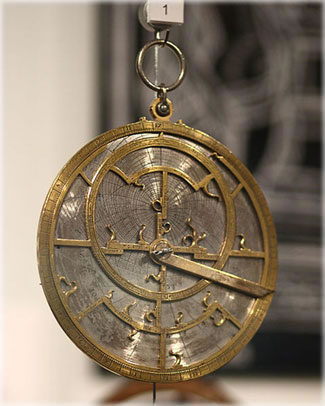
Astrology draws on knowledge from many different fields, including physics and astronomy. This astrolabe — which is a tool for making astronomical calculations — was crafted in the 15th century by the French instrument-maker Jean Fusoris (ca. 1365-1436).
Astrology is an unusual branch of knowledge in that doing it well requires a person to draw upon so many different fields. To name a few, in addition to astrology itself, we have to know about: astronomy, psychology, counseling, healing, metaphysics, some mathematics (less, now that there are computers), mythology, current events, history, relationships, sexuality and medicine. You would think that might take 20 years in a Greek academy.
To do astrology well, you can’t just know about these things — it’s necessary to integrate them into one another to put them into practical use. Speaking of practical, I had been going to conferences since 1995 and had never noticed a class focused on communications. After several years of lobbying the community, I was offered space to teach a writing class (sponsored by AFAN), which will be followed up by an Internet marketing/networking class taught by Donna Woodwell. AFAN is also sponsoring a media and public relations panel. These are excellent steps in the right direction.
While we’re on the topic, I would like to make a few suggestions for how conferences might contribute to better astrological education. I propose the following programs or concepts, which could be taught in a diversity of direct participation and workshop formats. It’s important to have the right format for the right kind of study. Some things work fine as lectures; others require a more roundtable or seminar-style approach.
Invite non-astrologer therapists to talk about how to work in a counseling room setting. Nearly all contemporary astrologers serve as counselors, even though most don’t call themselves that. We’re expected to help our clients through divorces, personal losses, illnesses, working out relationships, bouts of depression. Counseling comes with the astrological territory. I propose that we recruit some of the more innovative voices from progressive therapy projects and explore working with people as people rather than as extensions of their chart.
We need a real conversation about ethics. In medicine, the practitioner is supposed to try to do no harm. In matters of ethics in astrology, is it enough for the astrologer to suggest that the client consider the ethical considerations of his or her choice (such as a financial investment)? Should the astrologer actually decline to offer certain astrological advice and timing that might cause harm? Should the astrologer turn down clients seeking astrological advice to better exploit someone or the environment? Is it ethical to write about the charts of famous people, without their consent? These, and other questions, are fodder for our real conversation about ethics.
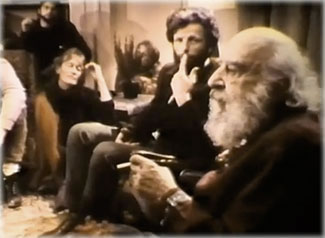
Astrology needs innovators of therapy to help us figure out how to best work with people. This is Fritz Perls, one of the creators of Gestalt therapy, working in group process, ca 1970s. Perhaps it’s my background with Gestalt therapy, but I have always thought of the astrology chart and especially transits resonating with the immediacy and holistic quality of this modality.
Open up the discussion of modern astrology. During the past 20 years, the profession has developed a fixation on ancient astrology. The presence of informed scholars and greatly improved translations of old texts is a beautiful thing — beyond amazing, if you think about it. The reverence for tradition is honorable, healing something at the roots of the crisis that contemporary astrology finds itself in. Yet the solar system has changed profoundly in those same few decades. If you came to any astrology conference hoping to find out more about the newly discovered planets (Eris, Quaoar, Varuna, Sedna, Chiron and the centaurs, for example) you would typically find token representation. On a related theme — we can do a lot more with deep-space points (galaxies, pulsars, quasars). There are some great teachers who are doing alive, original work we can all benefit from.
Cultivate better Sun sign writers. Sun sign writers — that is, the people who write the horoscopes in newspapers and magazines — are astrology’s most visible practitioners. Though many astrologers look askance at, or openly put down this modality, in fact, we reach more people than all of them combined. My theory is to put the very best astrology writers into positions where a broad audience is involved. Sun sign astrology depends on two skills — interpretation and communication. It’s where the proverbial rubber meets the road — what makes astrology worth all the bother. Conferences can offer classes on how to write better Sun sign columns, tapping into the truly amazing potential of this form of astrology to make a difference in people’s lives.
Focus on sex. Many clients have pressing questions about sex, and the complex sexual histories they are sometimes working through — and there are few places to actually have the conversation. An astrologer is a logical place to go, but how many of us have specific training or advanced knowledge in this area? How can we create a safe space for the conversation? What if you’re discussing sexuality with a client who is making your mouth water? How do you help someone figure out what is healthy for them, if that’s what you’re called upon to do? If you’re not gay yourself, how do you work with someone who is coming out of the closet? There is a fantastic on-the-ground movement of sex educators in the United States, many of whom are already on the speaking circuit — and we need to tap this community to educate astrologers. We need some of these speakers as keynote presenters.
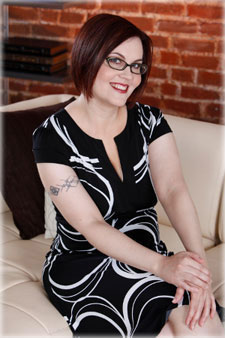
I nominate Tristan Taormino to be the first sex education keynote speaker for the astrology community. She is a Phi Beta Kappa graduate of Wesleyan, the niece of Thomas Pynchon, and a fantastic, enlightened sex education presenter. Publicity photo.
It’s time to provide astrologers with education about non-traditional relationship models. I have yet to see an astrology textbook that mentions polyamory, non-monogamous or other non-traditional relationship models. Yet many people are interested in these things, and lots of others are doing them without any special knowledge. It is readily available — another field with an active speaker’s circuit.
Are astrologers working from knowledge or belief? Do prominent Aquarian placements and/or prominent Uranus really indicate an enlightened, politically left ‘progressive’? Where are the statistical studies? We may need to put a disclaimer on the label. That said, reading a chart is a spontaneous and original experience, with all the factors taken in their unique context. It’s possible to teach something about how to do this.
Explore the use of astrology as a self-discovery tool. Most of our astrology is other-centered, yet a great many people use astrology as a self-discovery tool. It makes an excellent one — a kind of self-study spirituality game. Astrology is just one such path, though many others on other journeys might benefit from the self-reflexive learning from their charts. Here is an opportunity for astrology to cross-pollinate with other branches of modern spirituality.
How about real depth psychology training? Everyone agrees that astropsychobabble is not enough. The principles of depth psychology can be imparted in a series of classes, and study continued independently. For this I would propose non-astrological presenters, followed up by the most open-minded astrological presenters.
Working within the client’s religious framework. Astrologers work with people from diverse religious backgrounds. Religion is all the rage these days — and deep down, everyone has one. When you’re working with a devout Catholic, someone who is passionately Jewish or someone who is Hindu, it helps to be able to speak their spiritual language and work from within their frame of reference. It helps to understand the way they were taught metaphysical laws when they were a child. I propose that UAC and other conferences create a comparative religion track, and learn the role of astrology within the different approaches these religions take.

Dr. Brian Marsden was director of the Minor Planet Center and helped out astrology many times, providing the first ephemeris of Chiron to astrologer Zane Stein. Marsden died in 2010. Photo by Harold Dorwin.
Get some astronomers on board. Minor planet astrologers (starting with Zane Stein) have a tradition of being friends with astronomers — and we have learned a lot from one another. Yes, there are actually some astronomers who are intrigued by what we’re doing. Astrologers would benefit from hearing about the latest advances in astronomy from the scientists themselves. Our profession has astronomy as its main basis, and this is a field where there has been astonishing growth and development the past 20 or so years. Let’s get together!
The environment is in distress — and we are all impacted by the situation. Just like there is no separating astrology from astronomy, there is no separating what we do from the condition of the Earth. Every single person we work with is impacted in some way, and there is a deep layer of grief that many people experience as we watch the devastation of the planet. Often that comes with a feeling of helplessness, yet this whole condition often drops back as the client’s personal affairs occupy the foreground. Many therapy methods encourage people not to think about the world — only to take care of themselves. We are, fortunately, evolving past a place where that’s even possible, and where the distinction is irrelevant.
Astrologers need business training. Every astrology practice is a small business, and it’s not so easy to run one of those. What’s the best way for someone to organize their business structure, and how do they decide? How do you set up the practice, your office and your schedule? At what point is it a good idea to hire an assistant, and how do you do that? This would be a fantastic full-day intensive, with many topics suitable for lecture sessions.

Data collection and verification has gone downhill since we lost the magnificent Lois Rodden. Astrology needs to refocus its efforts on data collection, particularly of younger celebrities. Photo from Lois’s page on the Astrologer’s Memorial.
Create a lavish conference resource center. Imagine a room (like a ballroom or large conference room) with wide tables and a bunch of computers equipped with charting software, ephemerides, dials and other basic tools of the trade — set up on large tables. This would be staffed by experienced volunteer astrologers who could assist less experienced students with practical guidance and hands-on-the-work training in an informal format. You would be able to get help with your chart, seek tutoring in a special area of interest, learn how to use tools and have an intelligent one-on-one or small group conversation. This idea is stolen directly from John Dewey High School.
Astrological writing will benefit from fact-checking and attribution. Astrology stands halfway between the folk tradition and academic tradition. In folk tradition you can steal outright. In academic tradition, you usually attribute. While much of our knowledge is passed through the ages, some of it came out yesterday. We need to study, develop and teach the different modes of attribution. Also, data verification and collection has gone downhill steadily since the passing of Lois Rodden. This is an art that needs to be revived and honored by being taught.
What is astrology for? How does it work? And why do we use it? In order to use a tool safely, ethically and effectively, it’s necessary to understand how it works, and if that’s not possible, to be clear with ourselves how we think it works — and then explore the implications of that. Astrology often takes itself for granted, and rarely reflects on its failures, its shortcomings and its potential as a tool to approach life in a more holistic way.
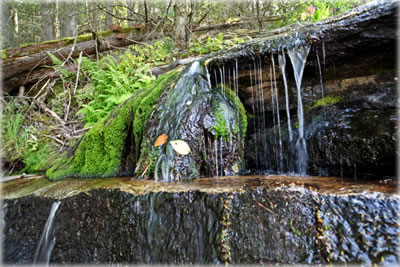
Astrology is part of the natural order of life, and could be considered a branch of environmental study. Astrologers would benefit from deepening their knowledge of earthy nature, and also understanding the impact of toxins on the environment. Photo by Eric.
It’s time to stop driving astrologers into debt to teach at conferences. Thanks to our subscribers, we at Planet Waves can afford to travel to conferences fully equipped and ready to go — but many astrologers must put the expenses on a credit card and pay it off. Some conferences pay better than others — though often presenters run at a significant loss, while the conference itself runs at a profit. If we’re going to have presenters already on the circuit or who come from outside our field, we will need to create the budget for that.
Astrologers fancy themselves intelligent people, equipped with one of the most sophisticated analytical tools in existence. Okay then, let’s figure this out.
While I’m at UAC I will be looking for people who can shed light on some of these topics, and if they’re game, I will share the interviews with you. Don’t forget to watch our Daily Astrology & Adventure page as well as Planet Waves FM starting midweek for our coverage of the United Astrology Conference.
Lovingly,
Additional writing: Dale O’Brien.
Posted in 2013 Resources Area
Leave a comment
Planet Waves FM :: United Astrology Conference
Dear Friend and Reader:
Welcome to Planet Waves FM’s coverage of the 2012 United Astrology Conference in New Orleans, which was held May 24 through 30. What follows is a series of interviews with conference attenders and presenters. In effect what we’ve created is a parallel conference that is available to everyone.
Audio production on these recordings is by Sarah, the theme music is by Yasa and website management by Anatoly. Note, we are starting to archive the recordings on our page at YouSendIt. They are in a second format at Planet Waves FM.
Planet Waves is a subscriber supported service. We are funded by our readers, not by advertisers, so all of the content you’re about to hear is free from commercial interruption.
We are offering this coverage of UAC 2012 to all site visitors as well as our subscribers. Reading our subscription service is an enriching experience that provides horoscopes and articles about astrology, personal growth and world events that will deepen your perspective on life. We offer not just astrology but a refreshing alternative to mainstream media, always informed by the astrological perspective. Find out more about subscribing here<.
We trust you’ll enjoy our coverage of the people of the 2012 United Astrology Conference.
Lovingly,
PS, if we did not get to you at UAC or you didn’t get to us — contact me about being a guest on Planet Waves FM in the future. And I am truly happy to make guest appearances on other podcasts. –efc
Thursday, May 24, 2012
Welcome from United Astrology Conference – Introduction from Eric Francis
Audio clip: Adobe Flash Player (version 9 or above) is required to play this audio clip. Download the latest version here. You also need to have JavaScript enabled in your browser.
Interview with Ravi Shanker Joshula, Vedic astrologer. Ravi is an actual Vedic astrologer from India who trained for many years and who has been practicing for 20 years. He describes a non-Westernized version of Vedic astrology: in other words, the real thing.
Audio clip: Adobe Flash Player (version 9 or above) is required to play this audio clip. Download the latest version here. You also need to have JavaScript enabled in your browser.
Ravi’s lecture —
Audio clip: Adobe Flash Player (version 9 or above) is required to play this audio clip. Download the latest version here. You also need to have JavaScript enabled in your browser.
 Interview with James Rogers, a psychiatrist who became an astrologer. James was working as one of the medicine-prescribing doctors who felt the calling to go deeper. This is the story of how he did that.
Interview with James Rogers, a psychiatrist who became an astrologer. James was working as one of the medicine-prescribing doctors who felt the calling to go deeper. This is the story of how he did that.
Click here to visit James Rogers website.
Audio clip: Adobe Flash Player (version 9 or above) is required to play this audio clip. Download the latest version here. You also need to have JavaScript enabled in your browser.
Friday, May 25, 2012
Interview with Genevieve Hathaway. She is Planet Waves writer who now lives in Egypt; that’s the topic of much of our conversation.
Audio clip: Adobe Flash Player (version 9 or above) is required to play this audio clip. Download the latest version here. You also need to have JavaScript enabled in your browser.
UAC Media Panel. This was an actual conference event, a panel on media and public relations in which I was a participant. I explain more in the introduction. This one is a long recording.
Audio clip: Adobe Flash Player (version 9 or above) is required to play this audio clip. Download the latest version here. You also need to have JavaScript enabled in your browser.
Interview with Kelly Lee Phipps. Kelly’s forthcoming book is called The Dao of Astrology. He has a truly interesting take on how to work with planets, signs and aspects. Highly recommended.
Click here to visit Kelly Lee Phipps webite.
Audio clip: Adobe Flash Player (version 9 or above) is required to play this audio clip. Download the latest version here. You also need to have JavaScript enabled in your browser.
Interview with Eric Meyers – The Astrology of Awakening. Eric is an author and counseling-trained astrologer who has a truly humane view on the subject of working with people through their transformations.
Click here to visit Eric Meyers website.
Audio clip: Adobe Flash Player (version 9 or above) is required to play this audio clip. Download the latest version here. You also need to have JavaScript enabled in your browser.
Interview with Moses Siregar – Astrology for the Soul. Moses is the founder of the Blast Astrology Conference as well as an astrologer and novelist.
Click here to visit Moses Siregar’s website.
Check out his book here.
Audio clip: Adobe Flash Player (version 9 or above) is required to play this audio clip. Download the latest version here. You also need to have JavaScript enabled in your browser.
Interview with Frances Clynes – Internet and astrology. Frances is doing her doctoral work on how astrologers use the Internet, and their philosophy toward cyber space. What she’s finding is that despite their metaphysical training, astrologers don’t see the ‘net that differently than most other people.
Audio clip: Adobe Flash Player (version 9 or above) is required to play this audio clip. Download the latest version here. You also need to have JavaScript enabled in your browser.
Interview with Ema Kurent – Eclipses. Ema is from Slovenia and has done years of research into the eclipses that occur the closest to birth. A vital topic in astrology that I have not taken up on Planet Waves yet, this conversation is a great introduction.
Audio clip: Adobe Flash Player (version 9 or above) is required to play this audio clip. Download the latest version here. You also need to have JavaScript enabled in your browser.
Saturday, May 26, 2012
Interview with Melanie Reinhart. Author of Chiron and the Healing Journey and To the Edge and Beyond, Melanie is one of my favorite astrologers of all time and we have dependably free-flowing, interesting conversations. This is the latest of those, which covers many topics though ending up on Orcus, a planet in the vicinity of Pluto. She’s a Gemini and I love speaking with her — we go on for 90 minutes, just like at the last UAC. Check soon for access to that conversation too.
Click here to visit Melanie Reinhart’s website.
Audio clip: Adobe Flash Player (version 9 or above) is required to play this audio clip. Download the latest version here. You also need to have JavaScript enabled in your browser.
Interview with Dale O’Brien. One of the original Chiron pioneers, this conversation with Dale is focuses on three relatively new outer planet placements — Chiron and Neptune in Pisces, and Pluto in Capricorn.
Click here to visit Dale O’Brien’s website.
Audio clip: Adobe Flash Player (version 9 or above) is required to play this audio clip. Download the latest version here. You also need to have JavaScript enabled in your browser.
Donna Woodwell’s free speech lecture:
Celestial Firedancing: Astral Theurgy and You
Wanted: Enlightenment Seekers! Ancient astral cults and alchemists imagined the Sun’s seasonal zodiacal passage as the celestial template for incarnation and enlightenment. As such, astrology held keys to unlocking the secrets of self-transformation. Learn how you can use these ancient practices – planetary invocations, sacred talismans, sympathetic magic and more– to manifest the full potential of your own chart and bring a little stellar magic down to earth.
Click here to visit Donna Woodwell’s website.
Audio clip: Adobe Flash Player (version 9 or above) is required to play this audio clip. Download the latest version here. You also need to have JavaScript enabled in your browser.
Anthropologist Kaushinik Rajan interviews Eric Francis. Rajan is an anthropologist who has spent many years researching the ideas of biologists. He is now turning his attention to astrologers, and in this segment he interviews me about my ideas on astrology and its significance.
Audio clip: Adobe Flash Player (version 9 or above) is required to play this audio clip. Download the latest version here. You also need to have JavaScript enabled in your browser.
Interview with Heather Horton. This is an interesting conversation on the role of counseling in astrology. Heather is studying to be a counselor and is working to apply some of the principles of psychology to her practice. We talk about how she can do that.
Audio clip: Adobe Flash Player (version 9 or above) is required to play this audio clip. Download the latest version here. You also need to have JavaScript enabled in your browser.
Interview with Andrea Gehrz. She is an American Sign Language translator who took up ancient Greek and Latin, becoming a translator of astrological texts. She’s a remarkably young translator with a passion for astrology — and sign language.
Click here to visit Andrea Gehrz’s website.
Audio clip: Adobe Flash Player (version 9 or above) is required to play this audio clip. Download the latest version here. You also need to have JavaScript enabled in your browser.
Interview with Samuel Bowling – Clairvoyant and Shamanic Healer. This conversation is about what it’s like to be a clairvoyant medium and receive messages from the dead.
Click here to visit Samuel Bowling’s website.
Audio clip: Adobe Flash Player (version 9 or above) is required to play this audio clip. Download the latest version here. You also need to have JavaScript enabled in your browser.
Sunday, May 27, 2012
Interview with Nomi Gallo and Simon Chokoisky – Ayruvedic Institute. This is a truly meaningful discussion about what it means to prepare for a career in astrology, as well as how to consider Eastern concepts in the context of how we use them here in the West.
Click here to visit the Ayruvedic Institute’s website.
Audio clip: Adobe Flash Player (version 9 or above) is required to play this audio clip. Download the latest version here. You also need to have JavaScript enabled in your browser.
UAC Press Conference. This was a press conference with very little press and an age imbalance within the 10 or so astrologers who were on the panel — only one that I could discern has Pluto in Virgo (late 1950s through early 1970s); the rest have Pluto in Leo (dominating the leadership of this conference). That said, they present some interesting views; it’s too bad I was one of the few reporters in the room.
Audio clip: Adobe Flash Player (version 9 or above) is required to play this audio clip. Download the latest version here. You also need to have JavaScript enabled in your browser.
Interview with Alice Kashuba. You may have heard of the Sabian symbols. Alice was involved in the channeling and development of the Fairchild symbols, a newer set of degree-by-degree symbols. Learn how she and a clairvoyant did the project, and something about the history of degree symbolism in astrology — which is an older tradition than you might imagine.
Click here to visit Alice Kashuba’s website.
Audio clip: Adobe Flash Player (version 9 or above) is required to play this audio clip. Download the latest version here. You also need to have JavaScript enabled in your browser.
Monday, May 28, 2012
Morning update.
Audio clip: Adobe Flash Player (version 9 or above) is required to play this audio clip. Download the latest version here. You also need to have JavaScript enabled in your browser.
Interview with Jim Shawvan. Jim is a predictive astrologer who specializes in current events, horary astrology and locational astrology. Politically he is an anarchist, meaning that he disavows the thinking of the left and the right, preferring instead to be fiercely independent. In this interview we talk about his predictions for the 2012 presidential election, the history of the 2000 election and the Sept. 11 false flag incident.
Click here to visit Jim Shawvan’s website.
Audio clip: Adobe Flash Player (version 9 or above) is required to play this audio clip. Download the latest version here. You also need to have JavaScript enabled in your browser.
Interview with David Tresemer. David is a psychologist-astrologer who has written a book about the Venus transit of the Sun. In Tuesday’s daily astrology post, I summarize some of his ideas, though I think that this interview is perhaps the most significant of the lot. He understands something about creative visualization and the learning process, both of which are involved with the transit of Venus.
Click here to visit David Tresemer’s website.
Audio clip: Adobe Flash Player (version 9 or above) is required to play this audio clip. Download the latest version here. You also need to have JavaScript enabled in your browser.
Dael Among the Mayans. Dael has lived with the Mayans in Guatemala for 25 years (so far). In this interview he offers his thoughts about the supreme power of the Mayans as maHere is the file unprocessed; I will replace it when Sarah does the final edit with the theme music.
Audio clip: Adobe Flash Player (version 9 or above) is required to play this audio clip. Download the latest version here. You also need to have JavaScript enabled in your browser.
Interview with Rebecca Gordon. Rebecca is a consulting astrologer in New York City who has a rare gift of being able to hear the astrological chart in music. She is translating her charts into music, working with a composer. This is a truly interesting interview with a sensitive, devoted astrologer.
Click here to visit Rebecca Gordon’s website.
Audio clip: Adobe Flash Player (version 9 or above) is required to play this audio clip. Download the latest version here. You also need to have JavaScript enabled in your browser.
Interview with Kelly Hunter. There are several different points called Lilith in the chart — which is a point of fascination for many women and men who love them. Kelly Hunter is one of the clearest voices on this subject. This interview covers the Lilith archetype as well as the osculating apogee (Black Moon Lilit\h), the asteroid Lilith, a hypothetical moon (Dark Moon Lilith) and a fixed star. This is a very cool interview — and the last of our UAC projects.
Click here to visit Kelly Hunter’s website.
Audio clip: Adobe Flash Player (version 9 or above) is required to play this audio clip. Download the latest version here. You also need to have JavaScript enabled in your browser.
Signing off from UAC 2012.
Audio clip: Adobe Flash Player (version 9 or above) is required to play this audio clip. Download the latest version here. You also need to have JavaScript enabled in your browser.
Posted in 2013 Resources Area
Leave a comment
Zodiac Sign Descriptions
by Eric Francis
 Aries (March 20-April 19) — Self-assertive, sometimes bold, sometimes cloaking deep insecurity with that boldness, Aries is always up for an adventure. Your sign is the key that starts the engine of the universe, and that means you have extra motivation, even in the face of intimidating situations. Something in you just rises to the occasion and you make your presence known. Your friends count on you for this, though you often need their support and do a lot better as an initiator when you have a posse around you.
Aries (March 20-April 19) — Self-assertive, sometimes bold, sometimes cloaking deep insecurity with that boldness, Aries is always up for an adventure. Your sign is the key that starts the engine of the universe, and that means you have extra motivation, even in the face of intimidating situations. Something in you just rises to the occasion and you make your presence known. Your friends count on you for this, though you often need their support and do a lot better as an initiator when you have a posse around you.
There’s something truly childlike about Aries, and its natives can accomplish great things because they don’t stop to think about how whatever they’re attempting is supposedly impossible. You are constantly discovering new depths of your inner nature, surprised time and again that your interior world is such a dominant part of your personality. Aries is associated with the planet Mars. Learn about the placement of your Mars sign and you will learn more about your personality. Mars represents raw, unrefined energy, which can be expressed many ways. Your job is to do the refining, and to learn some political skills so that you can get along with people even as you push them to do what you believe needs to be done. That said, you want relationship situations that are balanced and authentic, even though it can be hard to find people who aren’t intimidated by you.
You have desire, you have determination, you benefit the most from discipline and learning to be happy with gradual progress, and this includes getting to know potential friends and lovers. Remember, you don’t always have to be first and best, and intimate situations are the place to turn off your competitive nature. You can simply be you. Aries is a fire sign, and because it’s one of the signs that starts a season, it’s also considered a cardinal sign. It’s represented by the Ram, which is a very cool kind of full-strength sheep.
Speaking of full-strength, that’s what your astrology is these days. Of all the signs, Aries is the one right now that’s getting energized, electrified and spontaneously transformed. To do this well, you have to stay grounded and take care of yourself. We’re counting on you to lead the way into the future. That’s the true nature of Aries — and it’s blazing out right now.
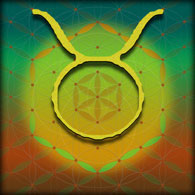 Taurus (April 19-May 20) — Calm, collected and attractive on the outside, raging like a tempest on the inside, Taurus is the blacksmith shop of the soul. If you’re a Taurus, you’ve incarnated at this time for the purpose of being shaped and tempered. Just be sure you go gently on yourself even during the tempering process. And remember that such deep working out should be harnessed in the form of creative energy as well as sensuality. You need both.
Taurus (April 19-May 20) — Calm, collected and attractive on the outside, raging like a tempest on the inside, Taurus is the blacksmith shop of the soul. If you’re a Taurus, you’ve incarnated at this time for the purpose of being shaped and tempered. Just be sure you go gently on yourself even during the tempering process. And remember that such deep working out should be harnessed in the form of creative energy as well as sensuality. You need both.
While you’re famous for your supposed stubbornness, few understand that you’re trying to work out your inner complexities and don’t want to make a move or a decision until you feel you’re all sorted out. But there is always more to sort, and at a certain point you have to go with the experiment of living. Change is challenging for you. It’s easier if you think it’s your idea, so make sure you keep coming up with new possibilities to keep yourself on the move. And speaking of ideas, change is indeed easier if you are connected to your creative process. You might need to finally move because you want to do something with your space. Not enough room for a recording studio or practice room in your house? It’s finally time to go somewhere bigger.
Remember that confidence and digging in your heels are two entirely different things. You must handle your possessive nature carefully so as not to alienate others, and remember that as much as you might like to be ‘taken possession of’, this doesn’t really work for you. At a certain point you will need your independence. Your sign is associated with the planet Venus, which is bright, beautiful and has an atmosphere of ammonia cooking at 900 degrees centigrade. It’s healthy to let some of that fire and passion out into the open. Taurus is a sign of the earth element, and is also a fixed sign, coming in the middle or peak of a season — which happens to be the season of Beltane, the pagan celebration of sex. Your erotic nature is more promiscuous than you may want to admit, however, you also have a strong drive to bond with others. You must find a balance between the two. To learn more about yourself, look up the sign of your Venus as well as your Moon, two elements in your chart closely associated with Taurus.
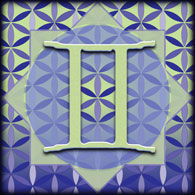 Gemini (May 20-June 21) — Gemini is one of the three human signs, illustrated by a person rather than some other kind of critter. And when a human appears, he/she appears in a pair. Isn’t that interesting? This comes with a question: what are the two sides of your nature? You’ve obviously identified a tendency to what’s called ‘dualism’ — the simultaneous expression of opposites.
Gemini (May 20-June 21) — Gemini is one of the three human signs, illustrated by a person rather than some other kind of critter. And when a human appears, he/she appears in a pair. Isn’t that interesting? This comes with a question: what are the two sides of your nature? You’ve obviously identified a tendency to what’s called ‘dualism’ — the simultaneous expression of opposites.
This is challenging, but it helps to have some self-knowledge and ongoing self-awareness. Are the two sides of your Gemini nature about the immortal soul coexisting with the mortal ego? Are they about the relationship between mind and body? Are they the good twin and the evil twin? Whatever the case, you need many modes of expression and you may have three computers. You may have a special gift of creative collaboration, because you can shapeshift and respond to any human situation as the person you’re needed to be. Use this skill and it will get stronger. You also need a diverse group of friends to stimulate the many sides of your mind. And you need to turn your nearly obsessive inner dialog into something creative; capture it in writing, turn it into a play or TV show; explore your psyche in a therapy process.
The challenge that most people feel with Gemini is that they ‘don’t know who they’re talking to’, since you are so multifaceted. But the better you know yourself, the more trustworthy you’ll be. If you’re aware of how people respond to you, and do your best to bridge this perception gap, your relationships will go more smoothly. You can also keep your friends guessing. I consider Gemini the kinkiest sign. It’s got to do with the whole twin thing — if you find your twin, you know how to make him or her feel good. Gemini is an air sign, and the first of the four mutable signs, which come at the end of a season. The planet associated with Gemini is Mercury, which is fast-moving and androgynous. If you want to learn more about yourself, look where Mercury is placed in your chart.
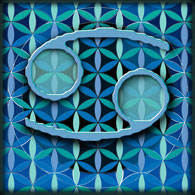 Cancer (June 21-July 22) — Nurturing, loving, devoted, cuddly, milky and self-centered, Cancer has it all. Your sign is not multifaceted; rather, you change like the tides, and are a little different every single day. Less polite people call you moody. What, not everyone has moods? Why do they all take things so personally? Or is it you who takes others so personally?
Cancer (June 21-July 22) — Nurturing, loving, devoted, cuddly, milky and self-centered, Cancer has it all. Your sign is not multifaceted; rather, you change like the tides, and are a little different every single day. Less polite people call you moody. What, not everyone has moods? Why do they all take things so personally? Or is it you who takes others so personally?
In any event, those born under your sign possess a certain desire for intimacy that is mingled with defensiveness about getting too close to others, and this can send a mixed message. It’s important that you have a sense of control in your relationships, but you don’t want to take that too far. You won’t respect weak people, so you may as well surround yourself with strong ones who respect your space and who feel at home in your home. It is sometimes said that the crab walks sideways, and your most important learning in this life is to be direct about what you feel and what you want, without feeling guilty about it. Your inclination is to experience your relationships in a structured way; you would have more fun if you would be more flexible. Remember that the people you love now are not as powerful as your mother was, so don’t treat them like they’re her.
Keep a Moon calendar on your desk and know the current phase and sign all the time. Cancer is one of the water signs, and is also a cardinal sign, being the beginning of summer in the Northern Hemisphere and winter south of the equator. If you want to know more about yourself, study the position of the Moon in your chart, as well as what are called the lunar nodes. These will reveal the deeper elements of your nature, and more than any other sign, the Moon’s house, sign and aspects may reveal your most authentic nature.
 Leo (July 22-Aug. 23) — Leo is one of the most misunderstood signs. But it’s easier to understand if you remember that while the other signs are ruled by a planet that orbits the Sun, Leo is ruled by the thing at the center of our solar system, around which all the other planets orbit (some 500,000 now known).
Leo (July 22-Aug. 23) — Leo is one of the most misunderstood signs. But it’s easier to understand if you remember that while the other signs are ruled by a planet that orbits the Sun, Leo is ruled by the thing at the center of our solar system, around which all the other planets orbit (some 500,000 now known).
So while Leo has the tendency to be at the center of it all, there is a deep responsibility that comes with having this as your Sun sign or ascendant. You’re likely to feel this all the time, and it manifests as a selfless and hard-working quality. It’s associated with the metal gold — the reference standard for all value. You can be generous with others and frugal with yourself; you hold yourself to a high standard and often strive for a kind of perfection that is impossible to attain. The less well-adapted (or insecure) natives of Leo can be incredibly egocentric and bossy, which can give the rest a bad name; for the most part those born under this sign emphasize leadership and responsibility rather than a privilege. You’re strongly drawn to group activities and organizations, and you have the self-confidence and presence of mind to play a useful role in any such activity. You need to be visible, and you also need a steady career that is in tune with your deepest values. If you want to understand yourself, study the house position and the aspects to your Sun, for which you will need your whole natal chart.
More than any other sign, the house position of the Sun is vital to understand with Leo. It will tell you the ways you’re most naturally inclined to express yourself. Your rising sign will tell you a lot. That said, as a Leo you want to be seen, known and you need to find roles in life that give you a bit of visibility and put you in a position to be appreciated. It’s unbecoming of your regal nature to expect adulation, however. You’re only as important as the role you play in the lives of the people around you, and it’s necessary to take a big view of what that means. Your relationships are with humanity first and individual humans second. You understand how important it is to see humanity as a collective entity, and you can actually grasp that idea. Make sure everyone you care about knows how deeply you really feel about them. Health-wise you must take care of your heart. Leo rules the heart, but it requires special care. Leo is a fire sign, and is also known as a fixed sign, coming at the peak (center month) of its season.
 Virgo (Aug. 23-Sep. 22) — Virgo is a mentally oriented, highly intelligent, nervous sign that needs to remember it’s made of the element earth, not air. That’s another way of saying that your life is a constant process of translating from idea to reality and back. Ideas are not enough. Yours is not the sign of science but applied science. The difference is similar to that between working in theoretical physics and learning how to be a master baker, or using your skill in chemistry to be an expert hair colorist. Applying ideas can be challenging because the mental world changes so much faster than the often-stuck dynamics of the physical world, and we’re often at a loss for how to translate between the two. That would be your job: to identify ideas and how to apply them; to match up problems with corresponding solutions.
Virgo (Aug. 23-Sep. 22) — Virgo is a mentally oriented, highly intelligent, nervous sign that needs to remember it’s made of the element earth, not air. That’s another way of saying that your life is a constant process of translating from idea to reality and back. Ideas are not enough. Yours is not the sign of science but applied science. The difference is similar to that between working in theoretical physics and learning how to be a master baker, or using your skill in chemistry to be an expert hair colorist. Applying ideas can be challenging because the mental world changes so much faster than the often-stuck dynamics of the physical world, and we’re often at a loss for how to translate between the two. That would be your job: to identify ideas and how to apply them; to match up problems with corresponding solutions.
You must be a master of what you do, though you’re likely to have at least two dominant areas of professional competence and two entirely different careers you’re developing. You have a fast, inventive mind but may squander that on doubt, which is rooted in self-doubt. If you’re ever wondering where your creative energy goes, look there. Of all the signs, Virgo needs to cultivate self-esteem as a primary life strategy. One way to do that is to mediate on fairness, and make sure that what you do actually honors your true principles. Having good self-esteem doesn’t mean you’re better than others — only that you are right to be you, to accept yourself and to be accepted for who you are — in that order.
This is one reason why so many Virgos opt for helping careers; it helps you to feel useful. You have a way of contradicting yourself and expecting others not to notice; it would help if you admit these contradictions so you don’t leave everyone constantly wondering where they stand with you. Men born under this sign are advised to make good friends with their inner woman. Virgos can be extremely hard on themselves and need to learn how to replace the criticism with a balanced level of self-appreciation, and valuing the subtle things in life. The planet of Virgo is ever-changing Mercury, and the mysterious Chiron is a close cousin. If you want to understand yourself better, study where these planets are in your chart. You’re also sensitive to Mercury retrograde, so make sure you know when that’s happening and plan accordingly. Yours is a mutable sign, coming at the end of a season, leading into the next.
 Libra (Sep. 22-Oct. 23) — Your sign is about beauty in its many forms. No matter what a Libra does, it’s got the intention of elegance. Everything is considered in terms of its presentation, which is not at the expense of quality; the presentation enhances the quality and vice versa. But appearances count, and you’re unlikely to respect anything that’s not done both with care and the appearance thereof.
Libra (Sep. 22-Oct. 23) — Your sign is about beauty in its many forms. No matter what a Libra does, it’s got the intention of elegance. Everything is considered in terms of its presentation, which is not at the expense of quality; the presentation enhances the quality and vice versa. But appearances count, and you’re unlikely to respect anything that’s not done both with care and the appearance thereof.
That also means you can hold yourself to a high standard and push yourself in a way that you rarely reveal to others. Their criticism can seem harsh to you because you’ve likely already seen any issue that someone points out and have addressed it in your own quiet way. Libra holds space for an ideal that can only be emulated on this plane of reality. Nothing quite lives up to it; that may be the reason for the famous quality of ‘indecision’ behind your sign. You recognize that there is no perfection, and alternates all have their advantages and disadvantages. The most important thing you can learn is how to decide, and most often you do that on a gut level. You ‘just know’ something and sometimes you think you’re a bit psychic as a result. Your outer appearance is often deceiving in that it veils your inner intensity. I call Librans the ‘human blowtorch’, because you can be cool, calm and quiet, and then turn into creative powerhouses when you are motivated to turn up the gas. Libra is the sign associated with the concept of justice, which is the meaning of the scales.
You have a sense of fairness and equanimity that is alien to many people around you. Yours is also one of the primary signs associated with relationships and relating, which are important priorities for you and which must be conducted in the spirit of ethics and integrity. If someone is dishonest, don’t convince yourself to trust him or her. At the same time, you must remember not to get lost in your relationships — and remember how to find yourself again when you do. Libra is a cardinal sign, coming at the change of a season, though the initiative of this sign can take some time to come out. Libra is associated with the planet Venus, and Saturn is well-placed here as well. If you want to know more about yourself, study the positions of these two planets. Venus is likely to be close to your Sun, and Saturn could be in any sign. Most of the signs have one dominant ruling planet that has survived as a carryover from traditional astrology — though Libra has two. Venus is about values and Saturn is about structure and form. To work your astrology, study and learn to master both of these planets.
 Scorpio (Oct. 23-Nov. 22) — Scorpio is an emotional, fiery water sign, usually represented by a creature of the desert — the scorpion. But it’s a desert creature that resembles lots of critters that live underwater, as if the ocean dried out and the scorpion stayed behind. Note the contradictions: fiery water, ruled by a land creature. Of all the animals to have as your totem, the scorpion is by far the oddest of the lot, and we can be sure that the ancient masters of lore had a perverse sense of humor, or were keenly aware of human nature.
Scorpio (Oct. 23-Nov. 22) — Scorpio is an emotional, fiery water sign, usually represented by a creature of the desert — the scorpion. But it’s a desert creature that resembles lots of critters that live underwater, as if the ocean dried out and the scorpion stayed behind. Note the contradictions: fiery water, ruled by a land creature. Of all the animals to have as your totem, the scorpion is by far the oddest of the lot, and we can be sure that the ancient masters of lore had a perverse sense of humor, or were keenly aware of human nature.
Scorpio is an odd hybrid, both a product — and an instigator — of evolution. In plain talk, that means growth. You tend to push the people around you. And you tend to feel pushed, both internally and by your circumstances. Your sign is associated with sex, deep commitment and death, and that’s what you remind people of, even if it’s on a subtle level (it’s probably not). This has an influence on the people around you, all of whom think you’re ‘intense’. You probably detest that word, and likely think that you’re normal and they are missing something. Maybe you don’t have a fever; maybe their body temperature is 88 F. Speaking of fevers, you need water, literally and figuratively; as emotional as this sign is, it can be mentally fixated (usually, on the psychology of others) and can appear to have trouble grounding in the realm of feelings. That’s a kind of illusion. You might cover your feelings, you might cover your vulnerability. But when you go deep, you really go. And when Scorpios get detached from the feeling realm, that’s when they can live up to their dangerous astrological reputation.
It’s vital that you not only think before you strike, but that you feel before you speak. Other people have feelings; you need to be reminded of this and spend time listening to the ones you care about. Express empathy as a conscious choice and invite people in with your famous capacity to keep a secret. This said, the passions of Scorpio are unparalleled, and people crave you as much as you crave them. Give them the space to desire you. Your sign is the one that rules over the sexual organs, deservedly so; it is also the sign associated with death and transformation. You love the idea and the experience of surrender perhaps a shade more than you love control. It’s healthy for you to let go; pay attention and you will figure out that jealousy is your best teacher. Scorpio is a fixed sign, of the element water, traditionally ruled by Mars, and in modern times by the potent antiplanet Pluto. To understand yourself better, study both of these planets. These days most astrologers forget (or pretend) that Mars isn’t involved. It is — and if you’re curious about astrology, start there.
 Sagittarius (Nov. 22-Dec. 22) — At the gates of our galaxy stands a centaur (the constellation Centaurus), whose name is Chiron. This is an ancient symbol, half-horse, half-man (or woman), whose time has come. It’s a comment about the state of humanity — not sure if it’s a person or an ‘animal’ and not sure how we feel about the animal aspect. Chiron’s features include being a maverick and helpful though in a way that’s sometimes inconvenient but works. Some astrologers associate a planet by this name with your sign.
Sagittarius (Nov. 22-Dec. 22) — At the gates of our galaxy stands a centaur (the constellation Centaurus), whose name is Chiron. This is an ancient symbol, half-horse, half-man (or woman), whose time has come. It’s a comment about the state of humanity — not sure if it’s a person or an ‘animal’ and not sure how we feel about the animal aspect. Chiron’s features include being a maverick and helpful though in a way that’s sometimes inconvenient but works. Some astrologers associate a planet by this name with your sign.
Yours is the sign of the quest, the far-away and far-out, and success based on an odd chance. You are the master of “leap before you look,” never quite thinking about what you do before you do it. But you don’t change this policy because you get lucky often enough, and your impetuous attitude gets you far better results than the people who sit around hesitating all day. As one Sagittarius recently said to me, she tries to jump across the river without stepping on the individual stones. She added, “I’m in the river, but I caught a fish.”
The ancients were brilliant, for aligning your sign with the Galactic Center — that is, the core of the Milky Way, our home galaxy — because you have an affinity for everything that’s exotic, remote, interesting and lavish. You will go places just to go there, meet people just to meet them, and you find children to be your peers far more than adults. You possess within your soul the library of the zodiac, which is to say you love knowledge and philosophy and probably have a Twitter feed that’s actually interesting to follow. Yet your reputation for being a freewheeling devil-be-damned type is entirely true until we get to your rock-solid values, which can be traditional, cautious and even conservative. You’re as private as you like to be well-known. When you help others, you might want to move on quickly so that you don’t get involved; having your space is crucial to you. You live with these various tensions a little like Chiron is made of his human and animal parts.
As unusual, energetic and optimistic as you are, it’s good for you to understand that you have limits. If you try to be a perfectionist, you won’t get anything done, but you also need to remember what you’ve learned about technique (there is a trick to everything), and how important those petty details can be. Remember that someone isn’t necessarily crowding your space by trying to be close to you, but it’s helpful if you’re honest that you live on your own terms. You’re compelling enough that those who care about you will go along. Yours is a fire sign and is described as mutable because it’s right before a season changes. It’s ruled in traditional astrology by the fat, happy planet Jupiter — the one with 66 confirmed moons. Study both Jupiter and Chiron to learn more about yourself and for additional guidance about the spiritual quest that is your life.
 Capricorn (Dec. 22-Jan. 20) — The sign of tradition is also the sign of revolutionaries. The sign of reserve is the one associated with the impressive debauchery of the Roman festival of Saturnalia. Saturn, your ruling planet, is considered the very stalwart of stuck, but is in reality the most dependable agent of change. You are similarly versatile, embracing the new with a mix of eagerness and skepticism, and honoring tradition as a source of information about right now. That, and you think that old books smell interesting.
Capricorn (Dec. 22-Jan. 20) — The sign of tradition is also the sign of revolutionaries. The sign of reserve is the one associated with the impressive debauchery of the Roman festival of Saturnalia. Saturn, your ruling planet, is considered the very stalwart of stuck, but is in reality the most dependable agent of change. You are similarly versatile, embracing the new with a mix of eagerness and skepticism, and honoring tradition as a source of information about right now. That, and you think that old books smell interesting.
Capricorn is the sign of all things old and ancient. Caesar said it was his sign of ‘good luck’ and is still associated with him today. You may love to go to estate sales and visit antique shops, not only because you like old things but because you like to contemplate the way things were in different times in history. You believe that there are lessons to be learned from the past, and we would all be better off for learning them. The past makes sense to you, and so do the reasons for leaving elements of it behind, particularly the useless ideas that don’t work (but we’ll keep that 1924 egg slicer).
Reputed to be an ambitious, hard worker, this is usually true, but the part about being ruthless is more of a myth than anything else. You prefer to get things done by agreement and arrangement rather than by force, but you’ll take authority if you have to, because someone has to be in charge and it’s better if that someone has a clue. You’re not as boring as you like people to think you are; really, you’re easy to please and if the sex is good, your life is good. Well, that and it’s nice to have a good job where your skills are tested and where you can grow and develop. You have great political skills and are one of the best people to plot and scheme with. You understand the deviant side of human nature.
Capricorn is crispy on the outside and deeply sensitive on the inside, a fact which most people may miss and which you would do well to inform them (by your actions), so they know. You prefer the squishy kind of person as a partner, as in emotionally open (in a way that seems daring to you), but they also have to inhabit their gender in a conscious way. This is the sign of the winter solstice, associated with the dark days of impending cold; you love the security of the home fires burning. Capricorn is an earth sign, of a cardinal type; the planet that rules your sign is Saturn. Study the position of Saturn in your chart and you will learn a lot about yourself — promise.
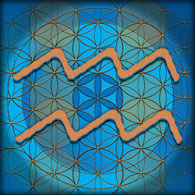 Aquarius (Jan. 20-Feb. 19) — Perhaps the most misunderstood sign of the zodiac, we can for sure say that the Aquarius personality values intelligence, ideas and loves a good theory. Yet progress for its own sake is not what you’re after; Aquarius people are the discriminating embracers of innovation that works. Just to give one not so random example, you’ve probably got your hand on a mouse right now. That was invented by Douglas Engelbart, an Aquarian.
Aquarius (Jan. 20-Feb. 19) — Perhaps the most misunderstood sign of the zodiac, we can for sure say that the Aquarius personality values intelligence, ideas and loves a good theory. Yet progress for its own sake is not what you’re after; Aquarius people are the discriminating embracers of innovation that works. Just to give one not so random example, you’ve probably got your hand on a mouse right now. That was invented by Douglas Engelbart, an Aquarian.
Aquarius has a strange relationship to time, as if you carry around your own time zone. You’re always living in an era of your own (past or present) which is never quite in sync with the present as defined by others. This carries into the often-noted contradiction implied in the sign that is at once associated with constant changes, and is also considered a fixed sign; for you the only constant is change, and you resist that change as much as you invite it. That’s because most change is pointless, driven by boredom or profit, neither of which are specific turn-ons for you. You’re not against money but you favor people (unlike many who are turned on by money). Like progress, money has a purpose: food, shelter, pleasure, sharing. It has little value for its own sake. Accordingly, you need a career you believe in ardently, and in that career you will excel. People will think it’s because you’re smart; in truth it’s because you do what’s important to you, what you feel belongs on the planet.
Traditionally, Aquarius is ruled by Saturn, a fact that is nearly forgotten today; in modern astrology it’s usually associated with the more wild, unpredictable and revolutionary planet Uranus. In truth, Saturn and Aquarius tell us a lot about one another — which is why Saturn is such a dependable agent for change and why Aquarius is so steadfast in its choices. Yet Uranus brings in three critical elements of Aquarius: your affinity for groups, your inventive spirit, and an ethos of fairness. You’re not afraid to change your mind if something, or someone, makes more sense than your prior ideas.
The Saturn/Uranus paradox embodies the chasm over which you must often stretch your body and your soul. You seek both individuality and group identification, but lean more toward the first, which is a good thing: only an individual can be part of a group. Yours is one of the human signs, and an air sign, represented by a woman holding an urn of water — or a ruler to measure the depth of the Nile. Fill that urn with water, so you have plenty to share. To understand yourself better, study both of these planets — and their relationship (aspects, affinity by sign, and so on). See the ways in which they tell the same story, and those in which they tell different stories.
 Pisces (Feb. 19-March 20) — The last sign of the zodiac embodies the idea that the world is created by opposite energies that complement and balance one another. Pisces is the living embodiment of yin and yang. That is to say, you want balance in your life, and you’ll go out of your way to find it. But you can also do without or function under extreme conditions, as if you’re drawing energy and information from some parallel universe. When we think of the great Pisceans of all time, Albert Einstein comes to mind, and this is someone who clearly understood alternate dimensions of reality and how what we see is not all there is.
Pisces (Feb. 19-March 20) — The last sign of the zodiac embodies the idea that the world is created by opposite energies that complement and balance one another. Pisces is the living embodiment of yin and yang. That is to say, you want balance in your life, and you’ll go out of your way to find it. But you can also do without or function under extreme conditions, as if you’re drawing energy and information from some parallel universe. When we think of the great Pisceans of all time, Albert Einstein comes to mind, and this is someone who clearly understood alternate dimensions of reality and how what we see is not all there is.
Associated with the ocean and the cosmos itself, Pisces represents the primal waters to which the whole human experience eventually returns, and from which new ideas emerge. Seawater contains nearly every element; so do you, and you manifest this through your flexibility, adaptability and your ability to morph into whatever you need to be. You don’t want to do this too much, however. You have the ability to take the long view; water is the element with the slowest and most enduring action. That is to say, when in doubt, you can rely on your persistence. You don’t demand perfection, only progress. You can be self-sacrificing and believe that it’s possible to serve the greatest good for all concerned. Pisces is the sign that’s truly populist. Aquarius usually gets this credit, but Aquarius is too discriminating to be populist. With Pisces, you might say that the ocean refuses no river.
Your sign is associated with music, imagery and dreams. You believe that art is one of the fundamental things that makes humanity what it is. For you, sex is spiritual, even the original devotional activity. Indulge yourself in these things: your hobbies should include at least two of them. Life would be extremely boring without the release from the edgy world of the ego granted by Pisces. If you’re born under this sign, you have to watch your boundaries, have realistic expectations and remember that the world is ruled by love and not by guilt. If you have self-esteem issues, figure that out and deal with them promptly; both you and everyone else will be happier, healthier and wealthier. Assert what you think is right and you will discover that many people agree with you. Yours is a sign of the element water, categorized as a mutable sign because it’s at the end of the season and indeed the end of the astrological year. In traditional astrology it’s ruled by Jupiter, and in modern times usually associated with the big blue planet Neptune. Venus is your close cousin. Study all three of these planets in your chart and you will have a much better understanding of who you are.
Posted in 2013 Resources Area
Leave a comment
The Core of Our Soul Journey on This Planet
by Margaret Gray
The Soul is the energy of Universal love, wisdom and compassion. It creates with these energies. -Gary Zukav
Creation and recreation, which is the core of our soul journey on this planet, are dependent on listening. At this time of major evolutionary transformation, all aspects of our being are expanding and increasingly inviting us to move our listening from our mind to our heart. As astrologers we offer the birth chart as a tool to support us in listening to ourselves. In exploring the birth chart, a bridge forms between the multiple dimensions and realms we inhabit, opening us up to greater possibilities of listening on all levels.
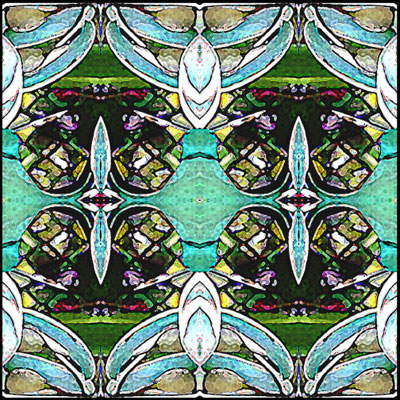
Sign art by Debra Cortese.
And so our exploration begins:
From our initial reliance to listening to mother’s heartbeat as we float in the 12th house amniotic fluid of the womb, in preparation for our emergence into our chosen world, our development on all levels is dependent on listening. For those with several planets in this 12th house of pre-birth, the gift is an ability to tune into and listen on all levels to the collective unconscious. The chosen soul task includes healing themes described by these planets on behalf of our ancestors. For example, with Mars in the 12th the core theme at a basic level concerns our will/drive/life force.
At birth our entry into the world of matter, described by the sign and planets on our Ascendant, invited us to listen on multiple levels, including the physical and energetic, whilst also being challenged to forget who we truly were and where we came from to fully immerse ourselves in our human soul journey. The one constant was our heartbeat, reminding us of the centrality of our heart on all dimensions. Hence, whenever we listen to our heartbeat, we most easily realign with our soul self. The sign and planets on our Ascendant can assist us in finding ways that are most congruent for us in doing so. For example at a basic level Pisces Ascendant is likely to find it easier to do so through meditation, creativity, dreaming and/or music.
Through our early childhood, described by the first three houses of our chart, we listened attentively to the adults in our life, as we sought to learn how best to manifest and express ourselves. With planets in the first house describing important overall core themes we wanted to listen to throughout our life, which we had placed on our path to best facilitate our soul development, the second house planets, cusp and sign more easily describe how we might stay connected with our self-value. This can only occur through learning to listen to our inner heartbeat/soul vibration/intuition/connection with self. For example, with Pluto in the second house we are invited to connect with our self-value through our inner power.
In these early years we also listened to the playful voices of our siblings and/or our peers as we happily recognized members of our soul family. The planets and sign in our third house together with Mercury describe the ways we most easily access listening for the purpose of communication. A helpful question to ask ourselves is: what kind of bridges do we form between ourselves and others? For example, Saturn in our 3rd house can indicate the absolute need to listen to ourselves in an authentic manner and to create solid bridges with others through engaging with our inner fears of being misunderstood or unheard.
With our sense of inner soul home described by our 4th house, we also encounter the archetypal world of father/mother[i] within, as we simultaneously integrate and separate from our human parents on our journey home. In this process we are faced with the ongoing choice between listening to the internalized voice of the parent within versus the voice of our higher soul self. Hence for example, with Uranus in the 4th at an archetypal level, we encounter the gift of Promethean intuition within, as well as our human experience of father/mother.
Creativity is the core of our experience on this planet and hence the 5th house and planets within it remind us of the importance of listening to the playful inner urge, so easily expressed by children when unencumbered by age-inappropriate responsibilities. Truly engaging with this house is the core of our journey here on this planet. With Venus in the 5th for example, we are most easily creative through engaging with what we value.
As we move to the 6th house of our chart, we are reminded that our body is a means of expressing our soul/spirit self. Hence it will wisely draw our attention when further listening is required. For example, with the Moon in the 6th we are invited to listen to our emotions through our physical body.
Engaging in the arena of relationships with others, beyond the ease of friendship and into the realms of intimacy, requires a new form of listening, as our defenses often spring into action for fear of pain to our human heart. As we engage with our Descendant and 7th house planets, we encounter the learning offered to us by significant others. Here we are invited to listen to that which we seem unable to hear or see within ourselves, as the other generously reminds us of what we asked them to tell us when we reached our soul agreements in the pre-birth realm. For example, with Jupiter in the 7th, that which brings us meaning is mirrored back to us through our relationships with significant others.
In moving into 8th house realms we are invited to listen and engage with our own power as multifaceted beings. Facing our human fears of annihilation, with planets in this house, we are regularly reminded of our choice to enter this incarnation primarily as agents of transformation and transmutation, both for ourselves and for our family. Listening to communication from all dimensions requires courage, will and determination as well as discernment. For example, with Chiron in this house, we are invited to engage with and ideally transform our wounds and those of our family, into understanding and healing for self and others.
In adulthood our learning continues, as we move from listening to external teachers to listening to our ever-expanding inner wisdom and knowledge. Hence planets here invite us to expand our learning through integrating their qualities. For example, with the Sun in the 9th our journey in this lifetime is one of learning and teaching.
With planets in the 10th our soul journey invites us to listen to what the world requires of us as we choose how to manifest our offering in concrete form, often in the shape of our vocation. The archetype of Mother also requires integrating with planets in this house. For example, Mars in this house invites us to share our drive with the world, as well as engaging with the archetype of the maternal warrior within.
As we reach the 11th house we are faced with differentiating between the voices of our family, tribe and collective versus our internal voice. With planets in this house we are invited to listen to everyone, as we choose how best we might contribute to the evolution of the collective. With Neptune for example in this house, we can most easily listen through engaging with the right side of our brain as we release the logical mind.
[i] Depending on whether we allocate the 4th house to father or mother. I tend to allocate it to father.
About the author
Margaret is a Psychological Astrologer and Clinical Social Worker. She trained at the Centre for Psychological Astrology UK with Liz Greene and has been working in the U.S.A. and Ireland for more than 20 years with individuals, couples and children. Margaret also teaches astrology seminars and courses internationally and offers supervision to astrologers and therapists. Margaret is the author of numerous articles in astrology journals including the NCGR and AA journal. She has also written a regular astrology feature in Positive Life and Network Ireland Magazine. Margaret is the book reviewer for the ISAR journal as well as a teacher for IAA. She lives in Hawai’i with regular trips back to Ireland.
Margaret@astrologypsychological.com
www.astrologypsychological.com
Posted in Featured Articles
Leave a comment
Listening and the Art of Presence
by Donna Woodwell
Recorded version of the written meditation in this article.
Click here if you use Apple mobile device.
Audio clip: Adobe Flash Player (version 9 or above) is required to play this audio clip. Download the latest version here. You also need to have JavaScript enabled in your browser.
Not long ago, I was doing astrology mini-readings in a local bookstore. A woman presented her birth information, which I entered into my astrology software. As I looked at the chart on my screen, I was struck by the dissonance between the chart and the woman sitting next to me. It was as if two out-of-tune instruments started playing.

Photo by Sally Smith.
“Are you sure this birth time is right?” I asked her. She looked at the paper again. “No wait, it’s not.” The time I’d typed was off by six hours. After I adjusted and took another look, we had a lovely chat and she left with a smile.
Listening goes far beyond just hearing someone’s words (though that’s important, too). We hear even when there are no words spoken. Listening is an art of presence.
Fortunately, it’s also an art that can be cultivated with practice. When I was in grad school, I excelled in the two-dimensional world of academic intellectual discourse. But a few years into the program, I got sick; I literally couldn’t stomach it. For months, traditional doctors could find nothing wrong, which sent me on a quest for my own healing.
As fate would have it, I stumbled across a homeopathic doctor. He sat and listened to my story, then asked a simple question: “Has anyone tested you for food allergies?” “Um… no” I replied. Just by listening and being present, he had identified a problem in a few seconds that had stumped a half-dozen physicians. And with this epiphany, I could no longer live in Flatland. I needed a worldview with a more holistic vision.
On my travels, I met ike West (say it a few times fast, and you’ll hear the double entendre). A teacher of Earth-centered spiritual practices inspired by indigenous wisdom, ike has traveled the world sharing her experience of how members of modern society can learn to reconnect with “all our relations” – from the other creatures on the planet to the world of Spirit. For years, I sat with others in ike’s ceremonial circles. Though I didn’t realize it at the time, I was learning how to be profoundly present, connected to a web of life larger than myself.
One of the exercises we practiced involved learning how to listen. While this exercise is deceptively simple, it can produce ear-opening results. However, it is an experiential exercise, which means that just reading about it carries few benefits. You can only understand by doing it.
This exercise is best practiced in a quiet space, but can be done anywhere.
Sit still. Center your awareness in the middle of your head. Listen to the sound of your own breath as it moves in and out.
As you maintain your awareness on the sound of your breath, notice a sound outside of you. It might be a refrigerator, a fan or other noise in the environment. Listen to that sound, as well as the sound of your own breath. Allow the sensation of experiencing these two sounds simultaneously to stabilize within you.
Next, listen for another sound, a bit further away than the first two. Again, it might be a distant radio, traffic sounds, birdsong or movement in another room. Allow the sensation of making space for experiencing three sounds simultaneously to stabilize.
Continue to repeat this process with sounds farther away from you, feeling yourself go wider and then stabilize with each new sound. (Always remember to breathe!)
If you do choose to play with this exercise, you might notice some interesting phenomena. When you first begin, your awareness may flit back and forth between sounds. This is how our minds often try to multitask. If this is your experience, slow down, be still and allow yourself to sense the sounds simultaneously. It’s as if you are practicing yoga for your mind — the slower you go, the deeper you go.
You may also discover that creating space for three sounds simultaneously is a stretch, and four almost impossible. Remember, the goal is not to hear the most sounds, it is to experience all the sounds at the same time. Master holding a small number of sounds before adding more.
With practice, you may notice you can perceive distant sounds you may not have noticed before. There is no need to strain to hear. Simply allow your awareness to gently expand. In time you may even find you identify much that resonates beyond the physical into metaphysical realms. Like when I was with the woman in the bookstore, you may learn to hear outside the boundaries of words.
Listening is key to psychic acuity. To paraphrase William Blake: Open your ears, and everything will appear as it is, infinite.
About the author
Change-catalyst Donna Woodwell lives in Austin, Texas. An astrologer, hypnotist and writer, she dances at the crossroads of mind, magic and marketing. You can find her online or sign up for her free Daily Luna Tunes forecasts at Four Moons Astrology.
Posted in Featured Articles
Leave a comment
Listening To Dream: Voices, Images and Gods
by Dale O’Brien
Even sleepers are workers and collaborators in what goes on in the
Universe. – Hesiod
Carl Jung saw the modern world, especially America, as insane. He died before the modernity and American insanity increased exponentially. One antidote for this toxic insanity speaks to each of us through the wisdom of Dream. Psychologically healthy people, on average, experience one-third of life through sleep, the realm of dreams. Without sleep and dream, as in sleep deprivation torture, people go insane. Chironically, understanding what self-identified modern people call our “crazy dreams” offers a key to soulful sanity. (Mythological Chiron, by the way, taught dreams and healing to Asclepius, who used dreams in conjunction with the healing process.)
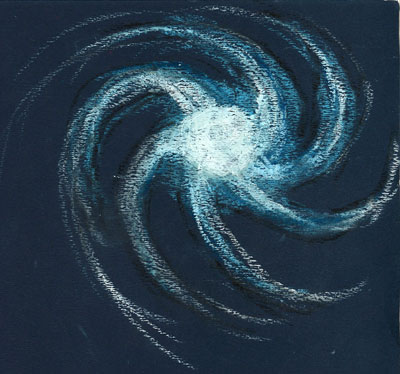
Art by Dale O’Brien.
How can we understand our dreams? It’s easy enough to find dream dictionaries and read what some self-appointed expert tells us our dream images mean. However, the most cursory look at different dream dictionaries shows us that such authors disagree with one another. So how can we know what our dreams are trying to tell us? The answer does not lie in being told by someone from the outside, no matter how well credentialed. Instead, if we listen in, Dream will speak for herself or himself. Some believe that the Divine speaks to us through dream, either every night, or every now and then. Sun-in-Pisces Edgar Cayce, known for his messages from dreamlike trance, said that our guardian angels, intermediaries between ourselves and the Divine, speak to us regularly through dream.
Whether as guardian angels in disguise, or as Divine “guest stars,” gods and goddesses can communicate to us in dream. For example, Persephone and Pluto, who were erotic lovers, personally visited me in dream. As you might imagine, experiencing the beauty and truth of this dream will never be cast away in favor of the trite clichéd simplistic keywords that many astrologers have thoughtlessly manipulated about these two. I know them personally. I’ve listened to each of them from the inside. I’ve listened in to one story of who they are. I know that this is a viable alternate expression of how they can manifest in astrology and in life.
Listening to Dream and looking at personal astrology is a wonderful combination. For instance, the twelfth house corresponds to one’s own dreams; the sixth house is the house of the dreams of “Other,” including significant other. Dream insight can be cross-referenced with transits, horary charts, etc. Of all the theoretical possibilities for a given planetary placement, Dream will tell us what is most relevant, or what wants to be heard and understood — not “cookie cutter” jargon that misspeaks the truth of Soul. Soul speaks through Dream.
Astrologer or not, there is an art to hearing the voice of astrological planetary and asteroid goddesses and gods in ourselves, or in others. Can you recognize the voice of a negative expression of Saturn? If so, those concerns need to be addressed somehow. Just as the subjective meaning of dream can vary, there is an art to astrological interpretation. Sometimes the voice of Saturn, for instance, needs to be countered by another astrological voice, as indicated by that person’s chart. Sometimes a planetary voice is calling out to the astrologer to be ally and advocate. There is an art of knowing that dream listening enhances, including when utilized with astrology.
Dream Listening: Living The Art of Knowing
Many wrongly assume that they don’t dream, but scientific brain activity monitoring indicates that we all do dream. Those who can’t remember their dreams assume that they do not have any. There are various possible causes of failed dream memory, including many pharmaceuticals — especially antidepressants and/or sleeping pills — alcohol consumption too close to bedtime, and the false-emergency sound of annoying modern alarm clocks. Those who sincerely want to remember dream, who allow time on awakening to record dream, generally do remember. It seems that the dreaming self needs to know that the wakened self appreciates dream and the dreaming self, and wants to be listened to.
Obviously the dreaming self communicates quite differently than we do with each other in our wakened state. Things are possible, and seemingly commonplace, in dream that seem impossible for our awakened selves. Anything is possible in dream, as wise lifelong dream listener Unitarian Universalist minister Jeremy Taylor said in the title of his book, Where People Fly and Water Runs Uphill. Jeremy (and others) observed that every dream has more than one meaning simultaneously, even seemingly contradictory perspectives. For example, a particular dream character can seem “bad” in one way, but admirable in another. We may remember a dream one way, yet write down or verbally share a somewhat different version of the dream. In contrast to our Mercurial and Saturnine “daytime” life, both or multiple versions can be “true” with dream. It is as if the writing down of the dream, or sharing the dream with other(s), generates another similar alternate dream. Similarly we may re-member (put together) a dream told by another differently than he or she told, and experienced, that dream.
Since dreams communicate differently than we do in awakened life, we can even “listen” to “silent” dreams, as we might react to viewing a work of art, a silent movie, or the nonverbal communication of another. What did those sad eyes of dream dog seem to say? Dreams come from imagination, the “nation” of images, speaking as art does, speaking in poetry, speaking in puns.
“Dream likes to be met in the way of dream,” says my teacher, Dr. Stephen Aizenstat, Chancellor of the Pacifica Graduate Institute and author of, and teacher of, Dream Tending. As he learned from indigenous dream tenders in Australia, Africa and Hawaii, Steve suggests speaking and/or writing down dream without punctuation or articles like “a,” “an” or “the.” Further, he has learned from listening to wise elders, to others, and from his own experience, that dream is not the same as linear and logical storytelling. As a mythic astrologer, I’d interpret this advice as: Dream never has to answer to simplistic either-or Saturnine judgments, nor to the abstract Mercurial “logic” of Gemini nor to the “common sense” Mercury or Virgo or Capricorn, or the like. With dream recall, there is many a truth that comes as what in another context would be simply misspelling.
In addition, Jeremy and Steve (and others) also suggest recording and verbalizing dream in the present tense, not past tense. Dream is alive, and does not “die” with daybreak, and may be relevant for a very long time to come, such as a memorable dream recalled from childhood.
Do try this at home. Let dream come unedited, without spell check, without punctuation. You’ll find that:
You’re a poet
Just didn’t know it
Listen how differently your dream sounds without punctuation! Free of imposed punctuation, spontaneous, invisible hyphens may bring adjacent words together for an additional meaning, or bring out an important word hidden in a longer word. An example of the latter follows.
Shortly after major storm Sandy, I dreamed of a department store. (In daily life, I’ve avoided such places as much as possible!) Writing down that dream, the first syllable of that word jumped out at me as “depart.” I immediately free-associated to the word “departed.” Somehow I knew that my unseen mother (Sun Pisces, now deceased) had made a nice hors d’oeuvres display upon sea-weathered wood, made to look like a dock. One end was empty and unadorned, did not look as authentic, so I dismantled it. From there, I free-associated to Mother Nature as Mother Sea. There was more to the dream, including a sizeable boat out of water, but even a small dream portion is full of evocative significance. (E-voc = voice from). As is possible with any dream, there is both a significant personal and collective, even Anima Mundi (“Soul of the World”) dimension to this dream. Nature and Her creatures are dreaming, and Nature can dream “through” us, so dream has more than just personal relevance.
Listening to Everyone in Timeless Time
We can just as easily re-live past experience or dream of the future (precognitive dreams) and/or prophetic dreams for others. Dreams others share with us can become “our own” as well, entering our souls through deep listening. Art, music, invention and more often originate from dream. Everyone and everything in dream is, in a way, the dreamer. We each can be (because we are!) male or female, animal or angel, any astrological archetypal voice, powerful or vulnerable, any part of the whole of everyone and everything — if we only allow ourselves to Listen. Me? I intend to “take it lying down.” My advice? Dream On, Listen In.
About the author
DALE O’BRIEN, Citizen of Image-a-nation, DreamTender, Chiron mythic researcher/ pioneer, Sabian Symbol Practioner, Historical researcher, Full-Time Astrologer (for over 20 years), offers a wide variety of astrological services and is also a Certified Astro*Carto*Graphy Interpreter. He lives in Eugene, Oregon.
www.chironsouljourneytruth.com chironguy@pacinfo.com
Posted in Featured Articles
Leave a comment

